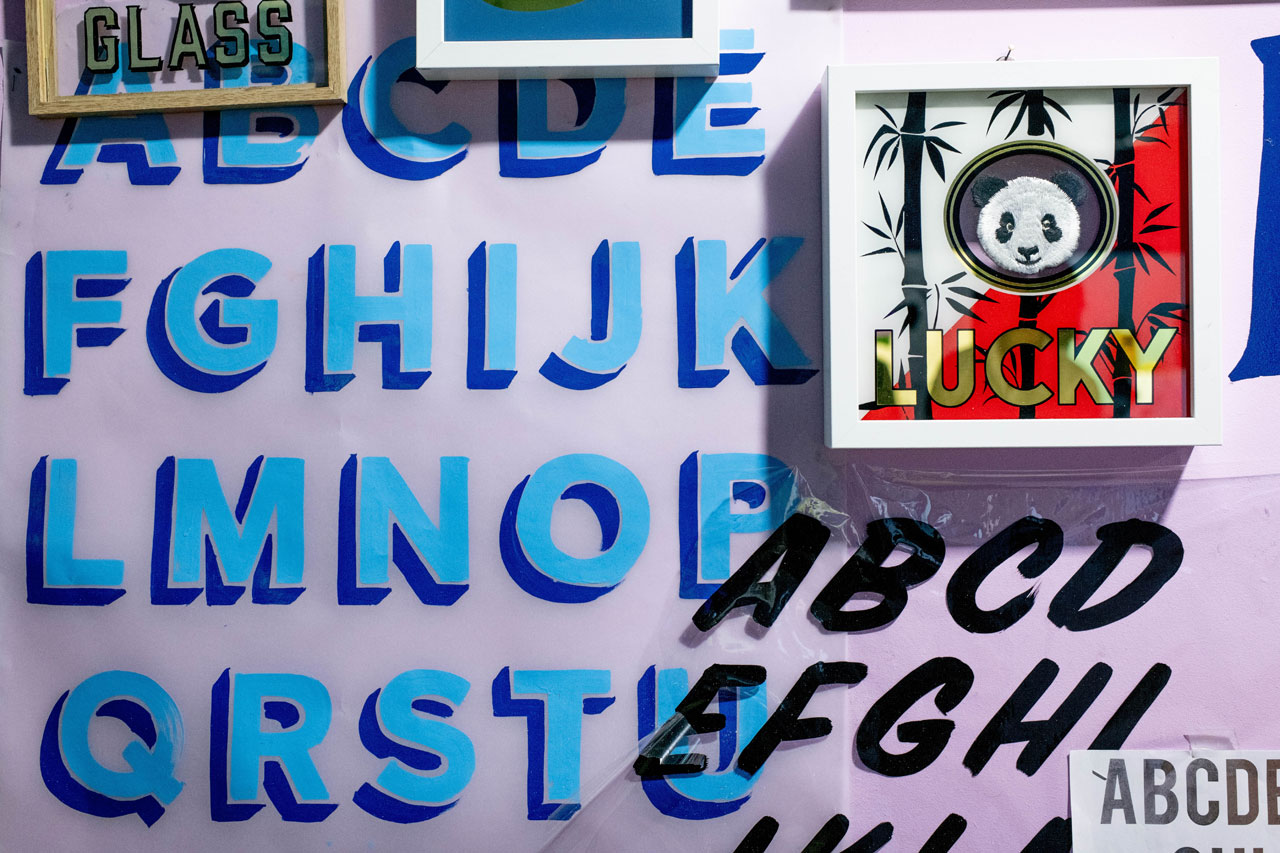
CANVAS event by Bombay Sapphire, London, July 2018. Installattion view by Elias Joidos © Yatzerland Ltd.
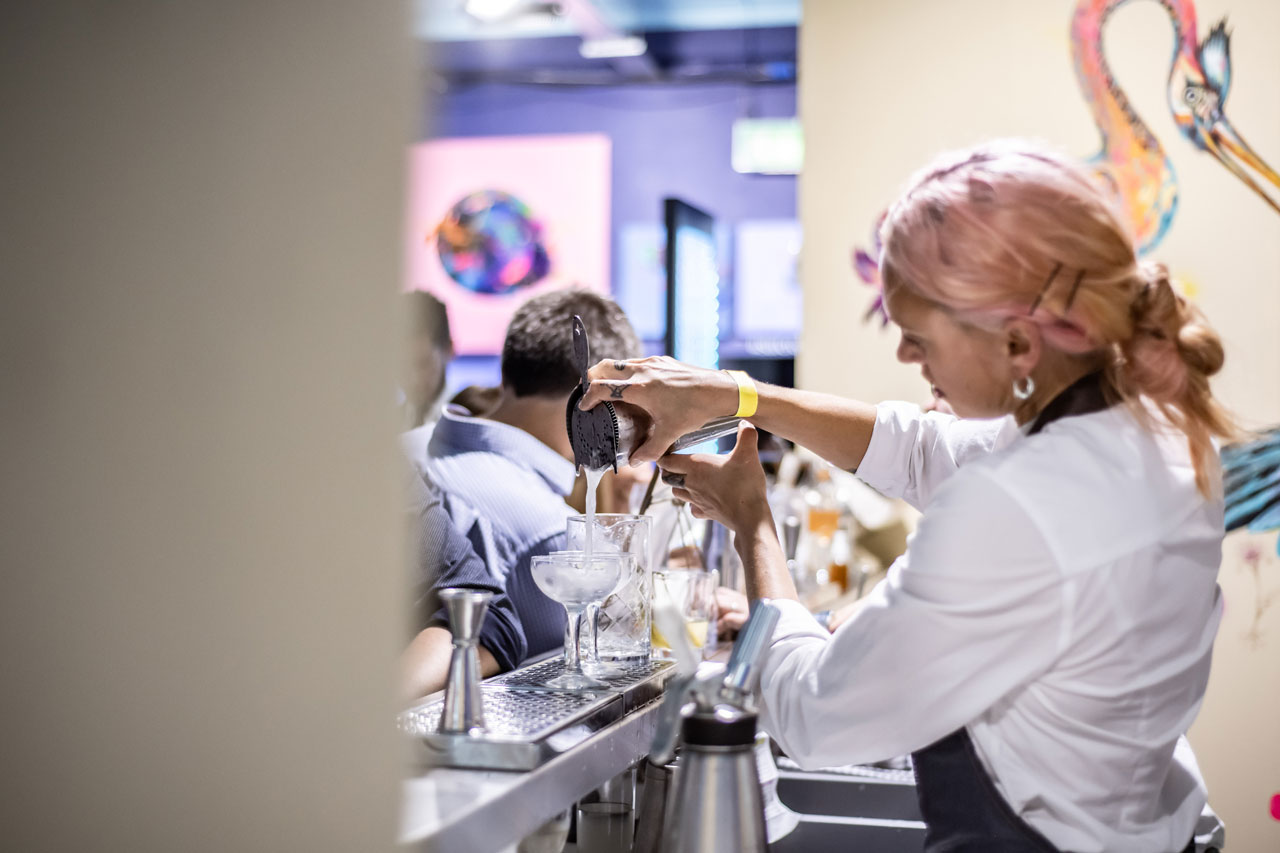
CANVAS event by Bombay Sapphire, London, July 2018. Installattion view by Elias Joidos © Yatzerland Ltd.

CANVAS event by Bombay Sapphire, London, July 2018. Installattion view by Elias Joidos © Yatzerland Ltd.
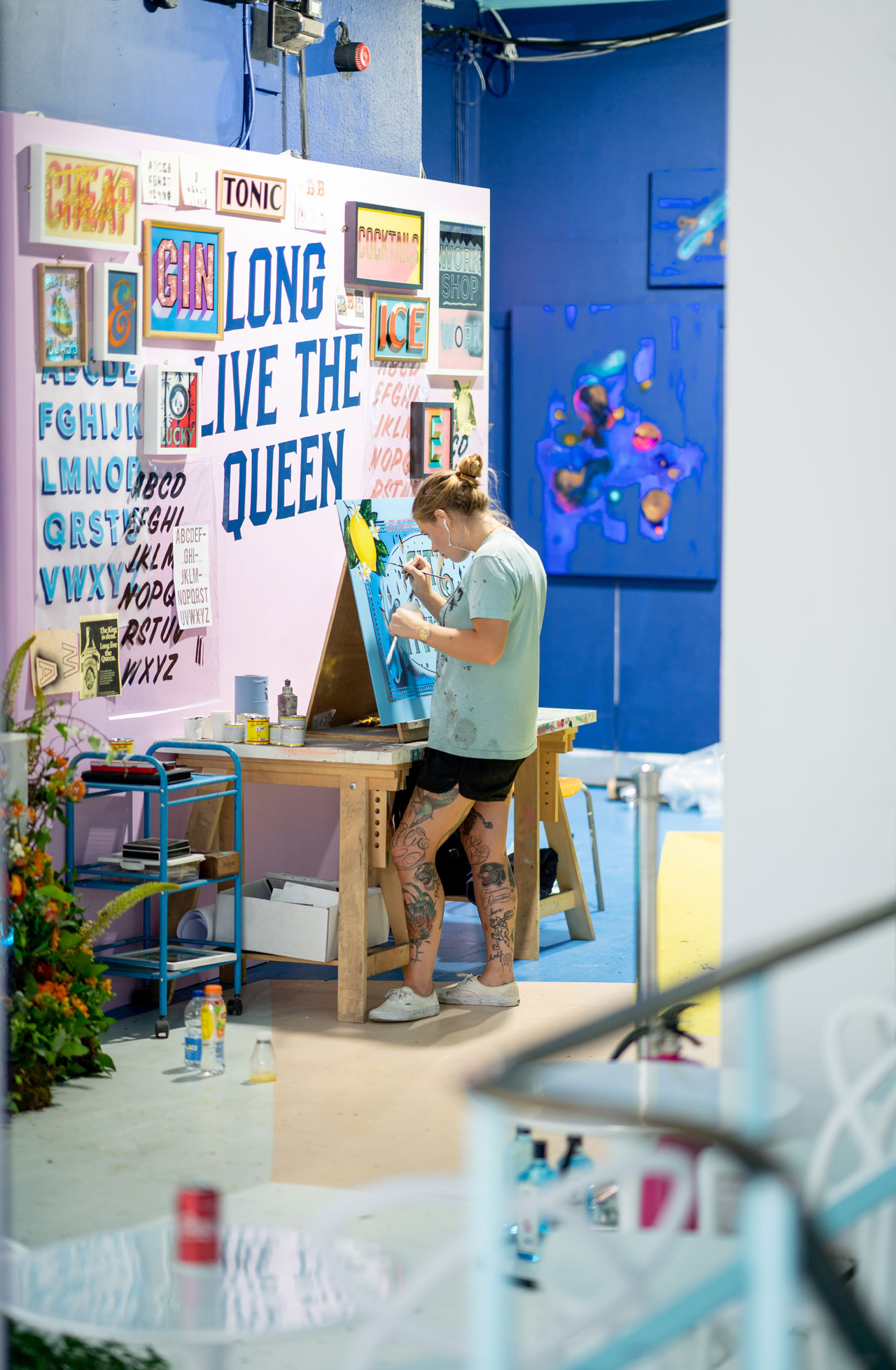
Alex May Hughes for CANVAS by Bombay Sapphire, London, July 2018. Photo © Bombay Sapphire.
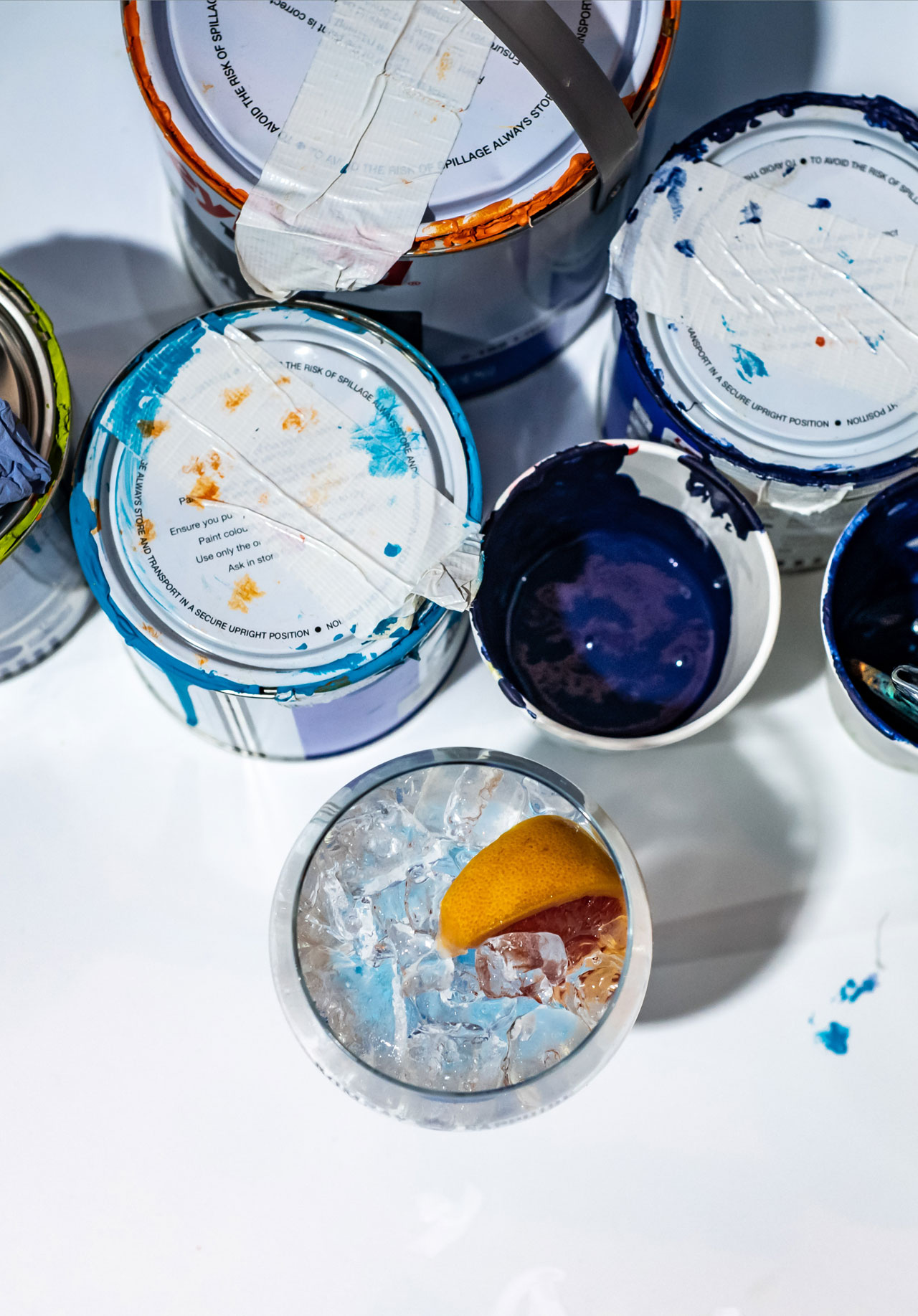
CANVAS event by Bombay Sapphire, London, July 2018. Installattion view by Elias Joidos © Yatzerland Ltd.
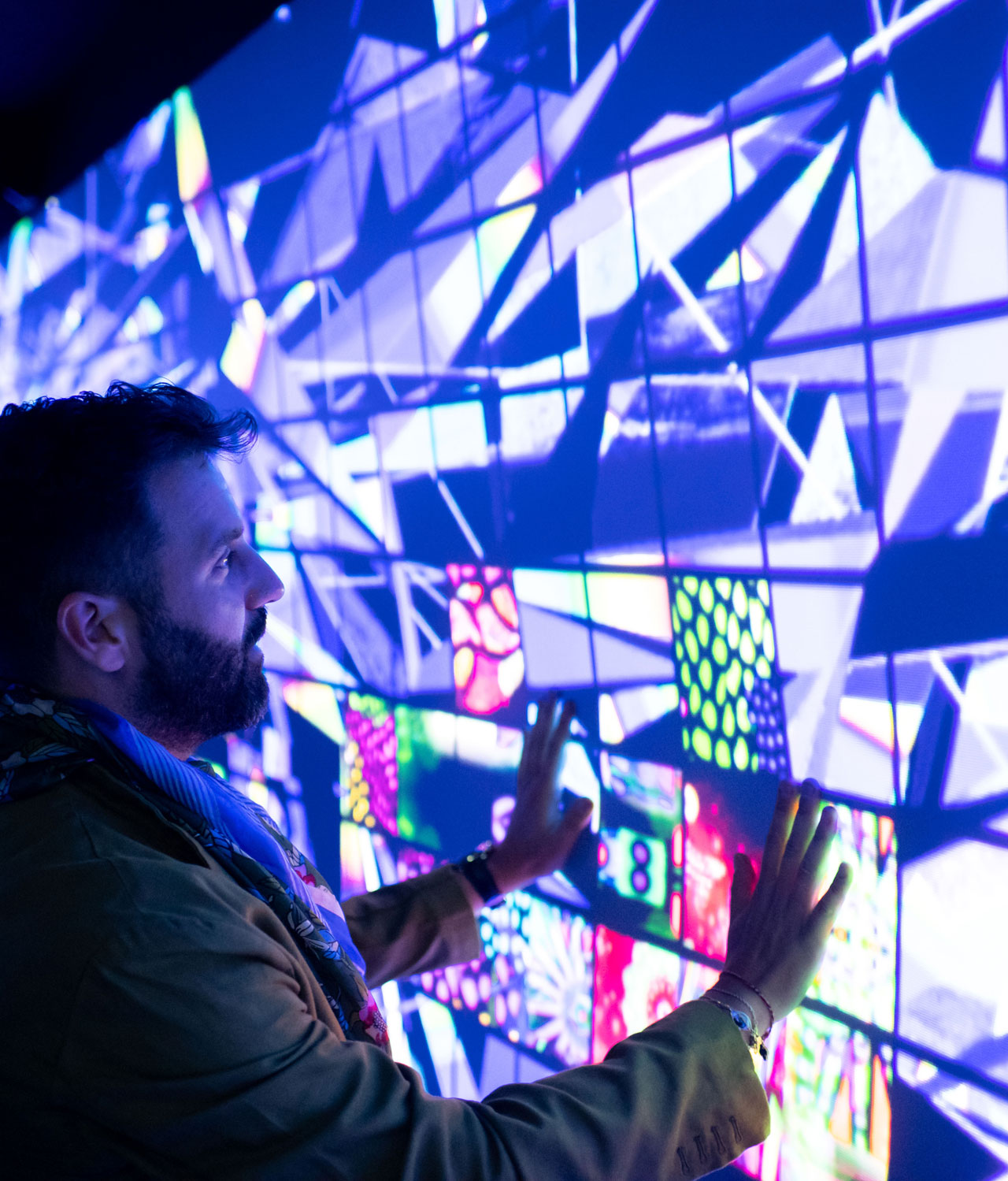
Rupert Newman for CANVAS by Bombay Sapphire, London, July 2018. Installattion view by Elias Joidos © Yatzerland Ltd.
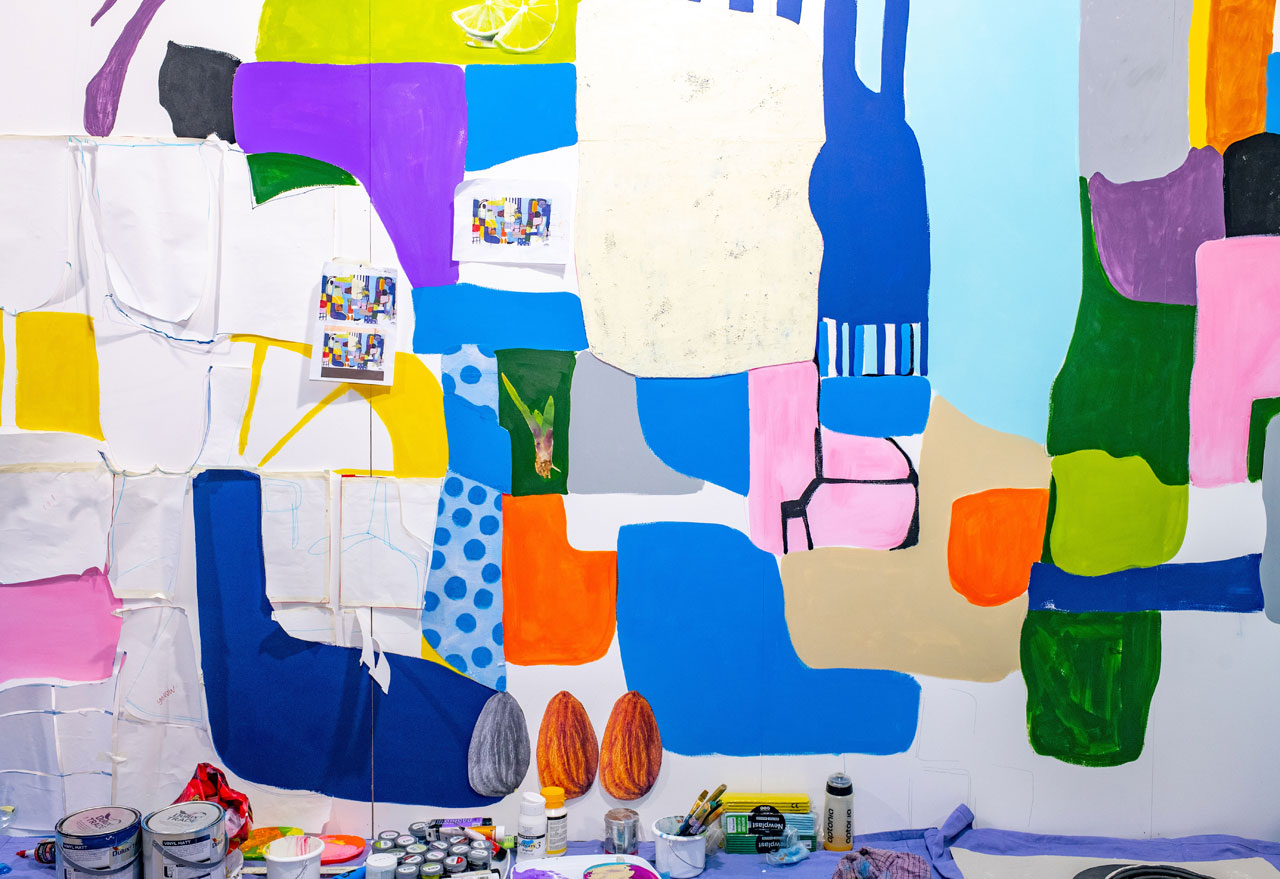
Connie Harrison for CANVAS by Bombay Sapphire, London, July 2018. Installattion view by Elias Joidos © Yatzerland Ltd.
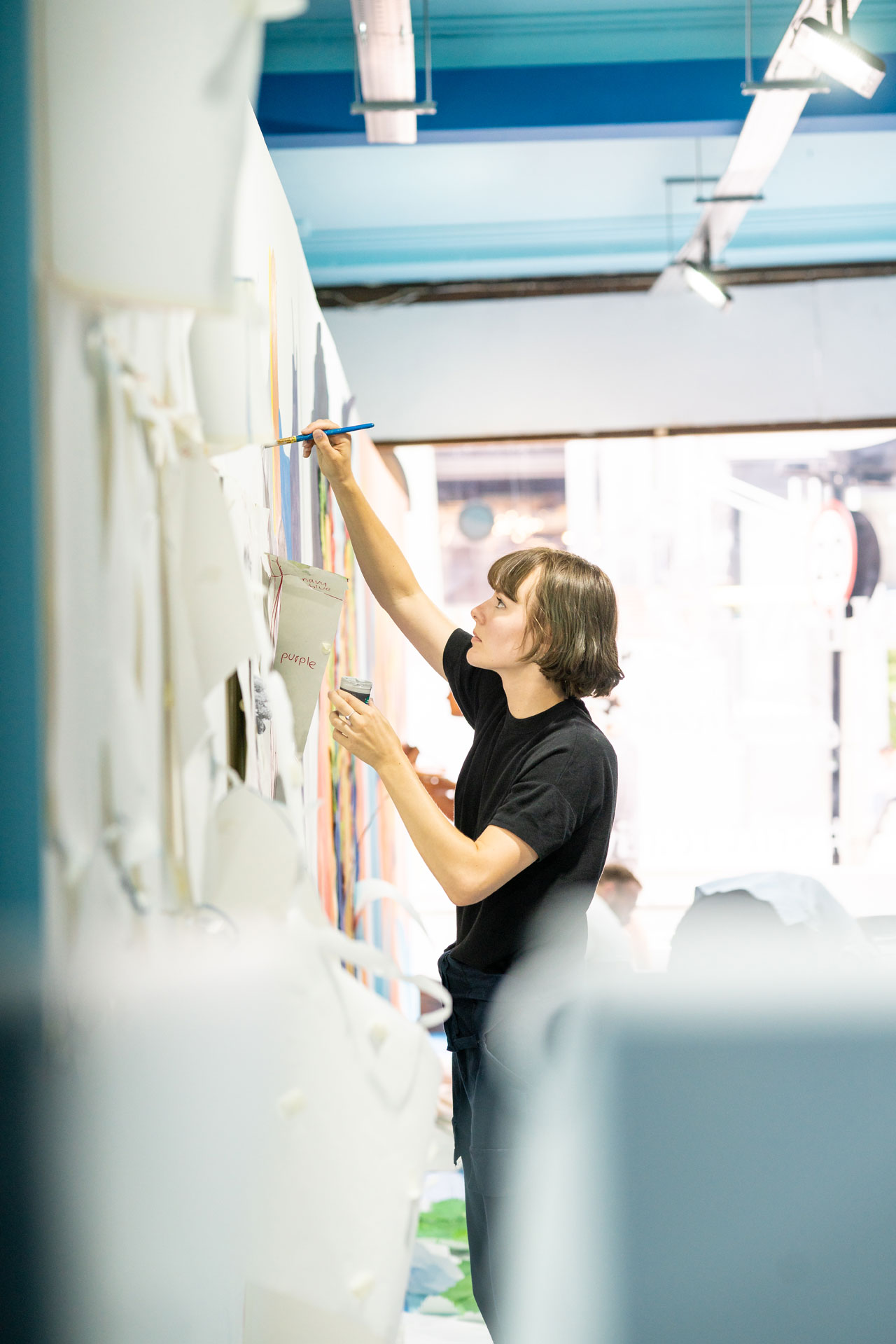
Connie Harrison for CANVAS by Bombay Sapphire, London, July 2018. Photo © Bombay Sapphire.
Upon entering, guests were greeted by the “Tonic Wall”, an elaborate piping installation dispensing four flavoured tonics, from spicy to fruity to sour and refreshing, which allowed you to create your own gin and tonic (G&T). And if this wasn’t enough to stir your creativity, there was also a Garnish Garden at hand so you could creatively garnish your drink, and further on, a Cocktail Finishing Studio where you could choose from a selection of edible paint and glitter toppings to jazz up the White CANVAS cocktails that were being generously served at the bar.
The imaginative list of gin cocktails which included such treats as The Dante Martini by mixologist Naren Young, Test House Punch by Marcis Dzelzainis and High Tide by Juan Valls, was matched by a series of equally exuberant installations created “in situ” by the invited artists. One of these was German artist and illustrator Olaf Hajek’s bar mural whose vivid colours and exotic composition immediately caught our eye. For CANVAS, Hajek, whose enchanting illustrations bring together folklore, pop culture and nature, painted a scene of entwined motifs of alluring flora and fauna adorned by illuminated Bombay Sapphire gin bottles.
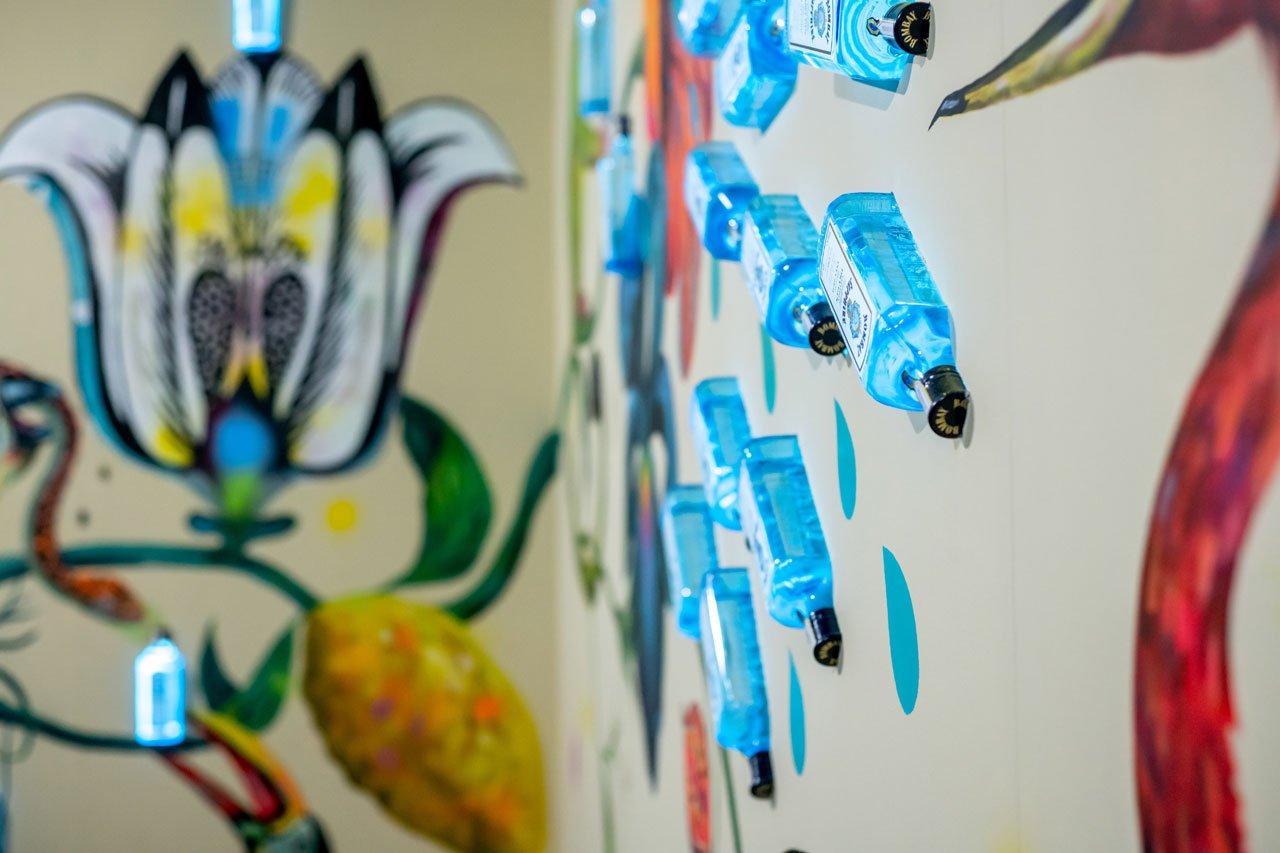
Olaf Hajek for CANVAS by Bombay Sapphire, London, July 2018. Installattion view by Elias Joidos © Yatzerland Ltd.
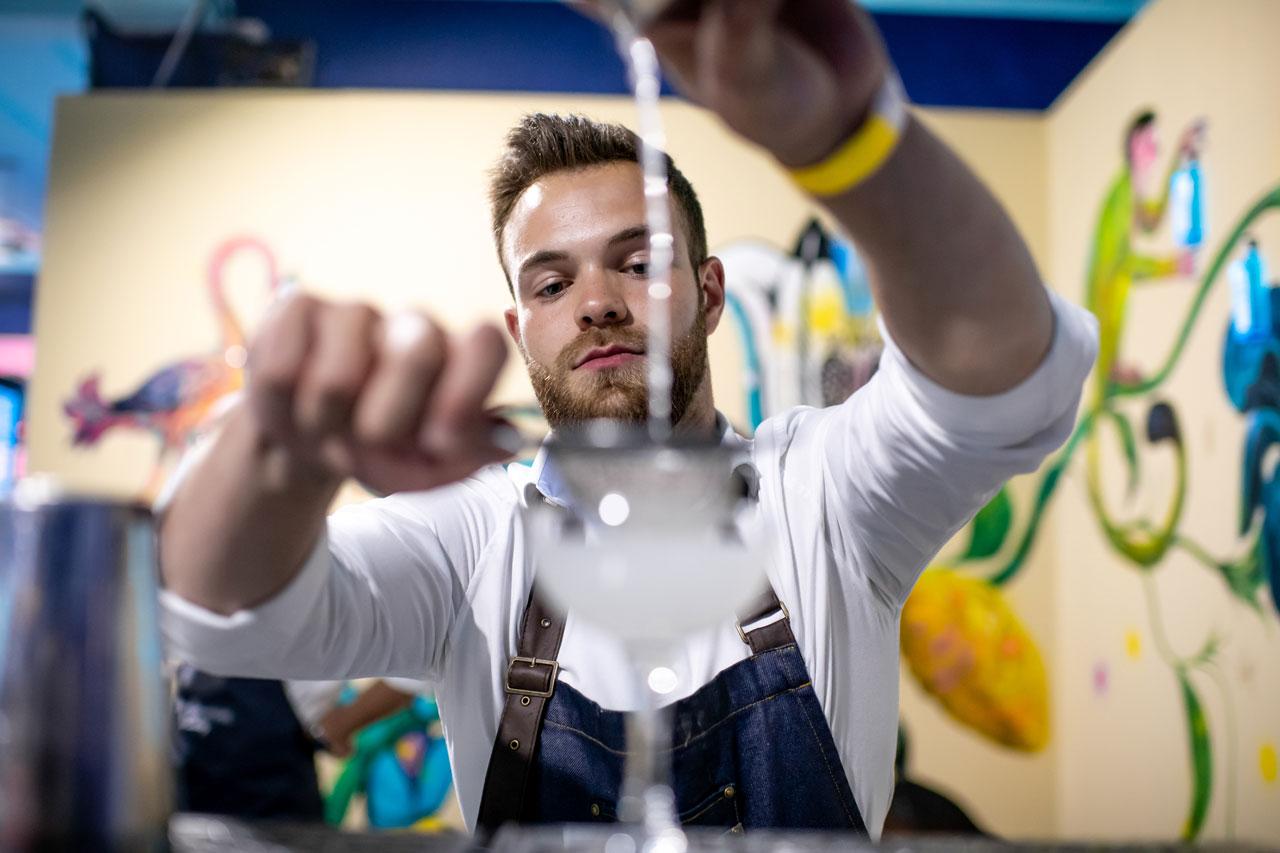
CANVAS event by Bombay Sapphire, London, July 2018. Installattion view by Elias Joidos © Yatzerland Ltd.

Olaf Hajek and Costas Voyatzis during the CANVAS event by Bombay Sapphire, London, July 2018. Installattion view by Elias Joidos © Yatzerland Ltd.
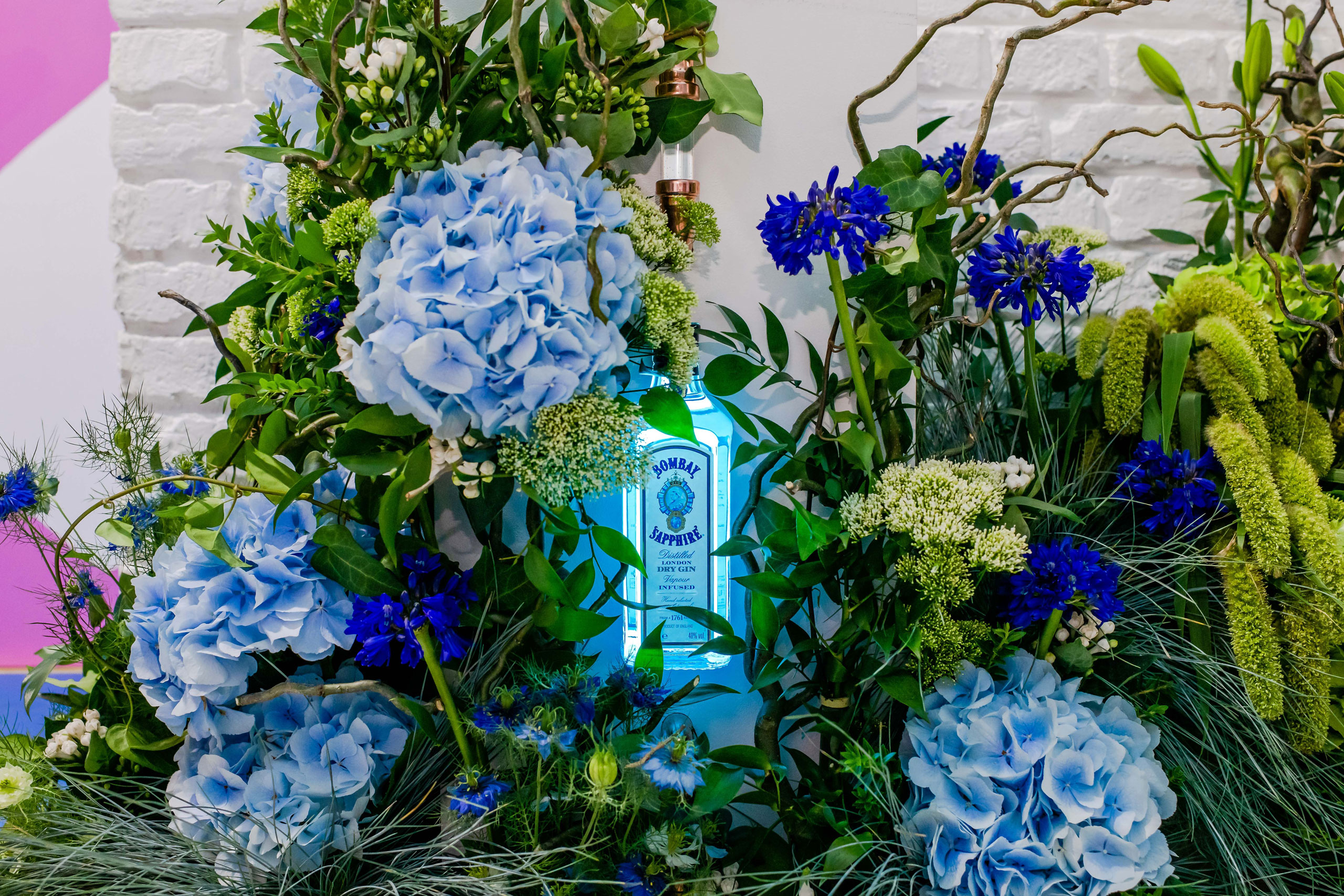
CANVAS event by Bombay Sapphire, London, July 2018. Installattion view by Elias Joidos © Yatzerland Ltd.
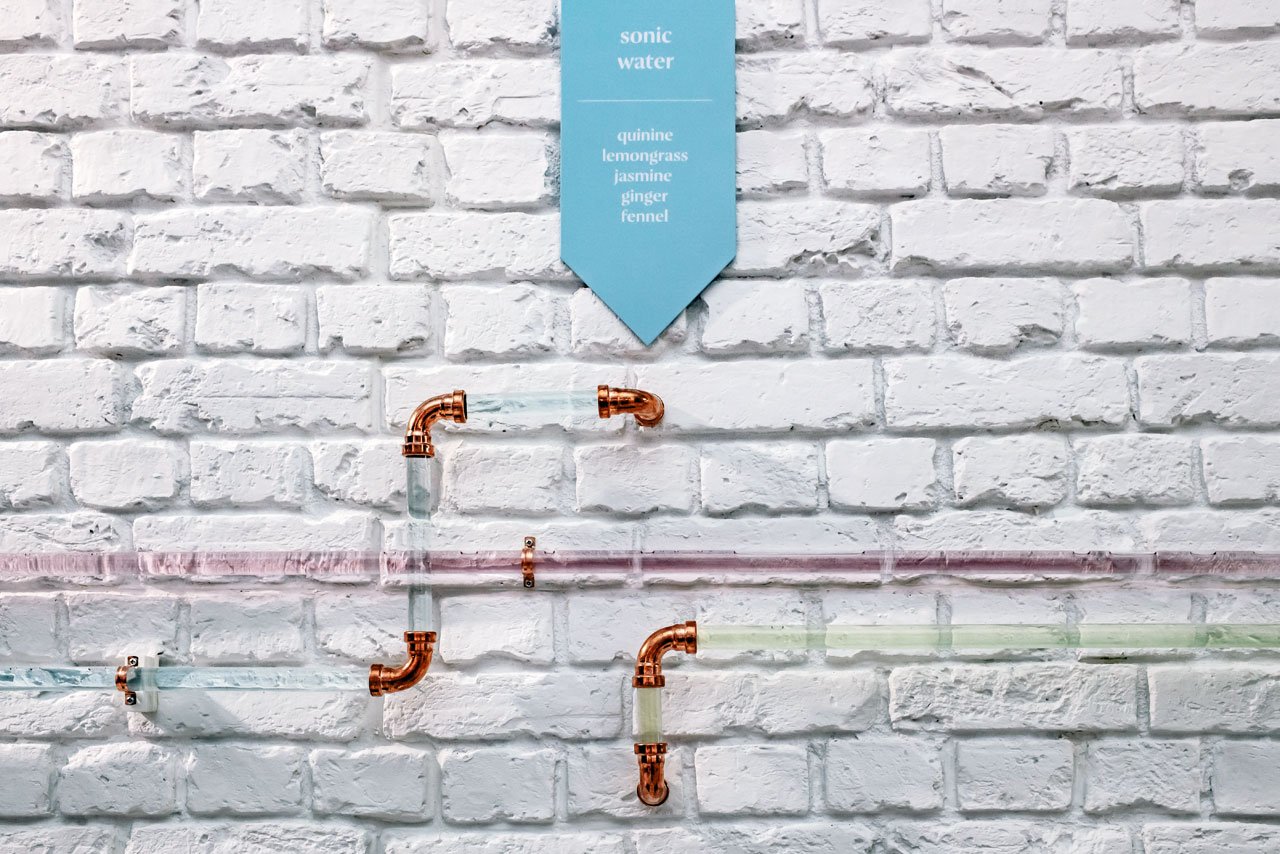
CANVAS event by Bombay Sapphire, London, July 2018. Installattion view by Elias Joidos © Yatzerland Ltd.
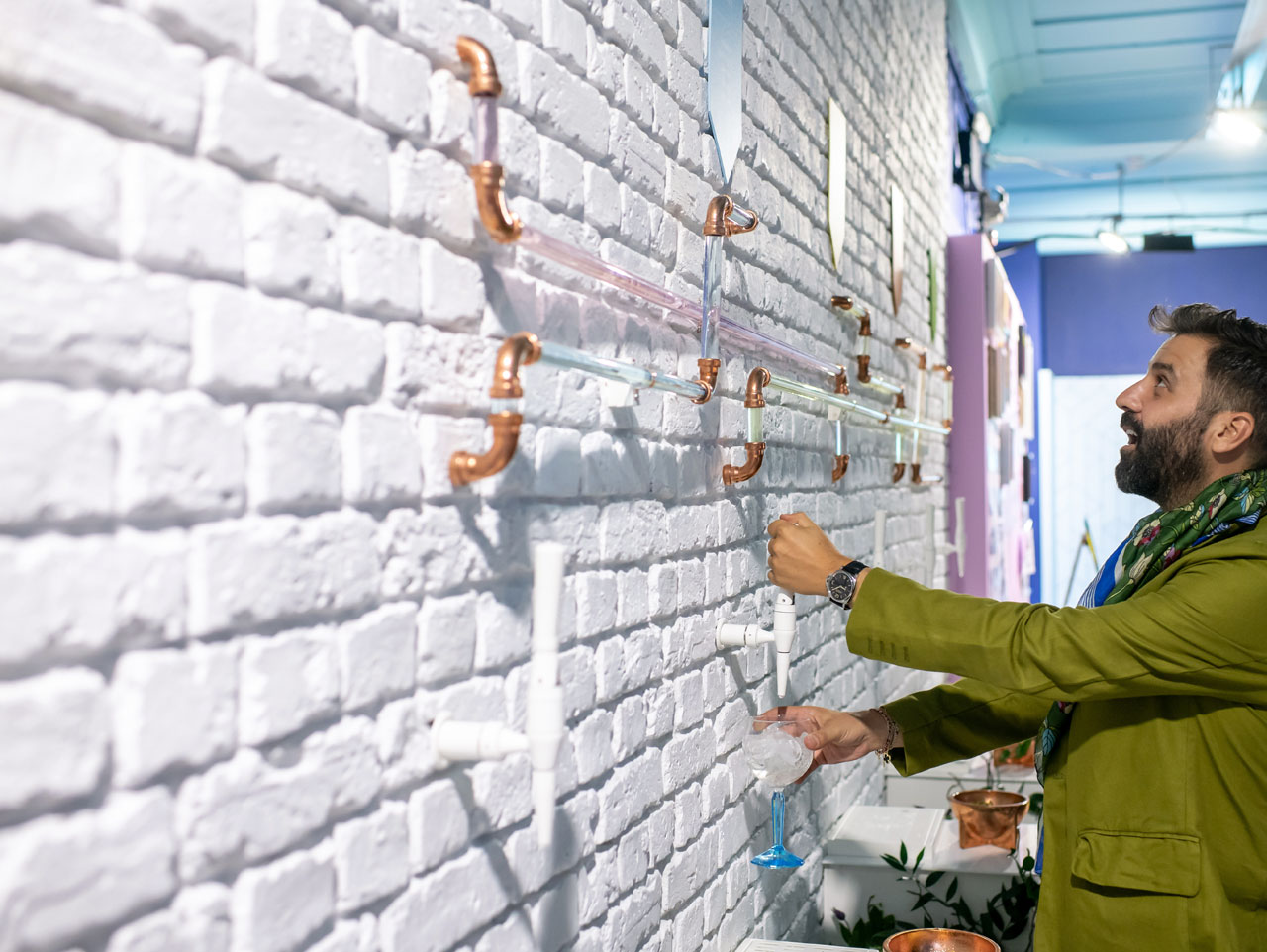
CANVAS event by Bombay Sapphire, London, July 2018. Installattion view by Elias Joidos © Yatzerland Ltd.
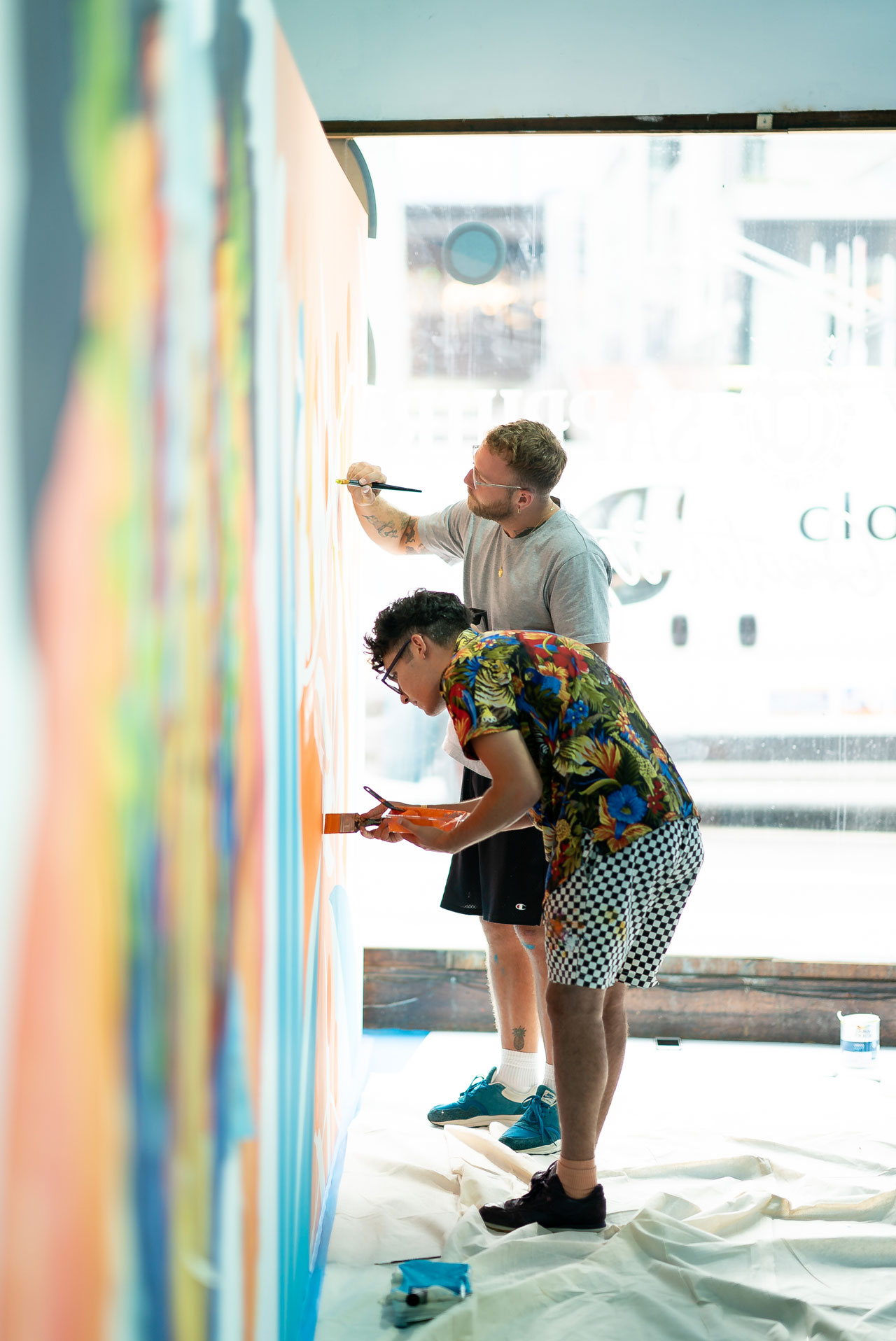
Josh McKenna for CANVAS by Bombay Sapphire, London, July 2018. Photo © Bombay Sapphire.
The celebration of colour seemed to be a common theme for the resident artists whose only instruction was to treat the white space of CANVAS as, well, a canvas. Vivid examples included the work of London-based sign-painter and glass gilder Alex May Hughes, who filled out a wall with a whimsical array of hand-painted signs inspired from vintage adverts and packaging that she observed at the Bombay Sapphire Distillery in Laverstoke (more on that later), the voluptuous, oversized characters of illustrator Josh McKenna, and the interactive wall in the form of a kaleidoscopic matrix that took over the venue’s basement by Rupert Newman.
We were also impressed by Madrid-based, Mexican born photographer Paloma Rincón’s images of deconstructed CANVAS cocktails, rendered as mini-sculptures and captured with an extremely high shutter speed while water is seductively poured over them.
Meanwhile, the coloured paint that was running down the columns, courtesy of Dutch multidisciplinary visual artist Rutger de Vries, conveyed -in the most palatable sense- Bombay Sapphire’s ambitious initiative behind CANVAS, summarized by global vice president of Bombay Sapphire Natasha Curtin as “handing blank spaces over to creatives so they can turn them into a living piece of art”, and which after London is now being rolled out across nine other European cities with all proceed going to artistic charities.
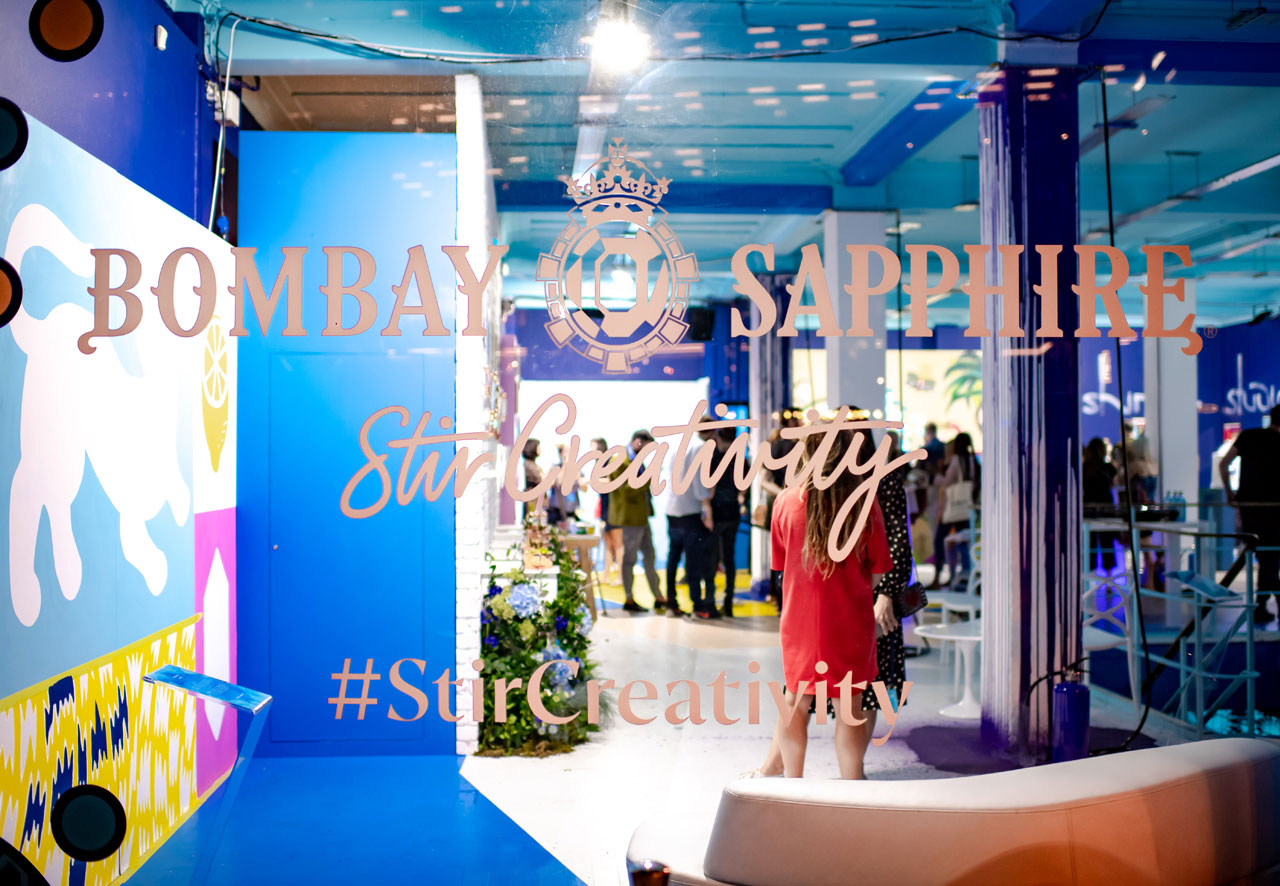
CANVAS event by Bombay Sapphire, London, July 2018. Installattion view by Elias Joidos © Yatzerland Ltd.
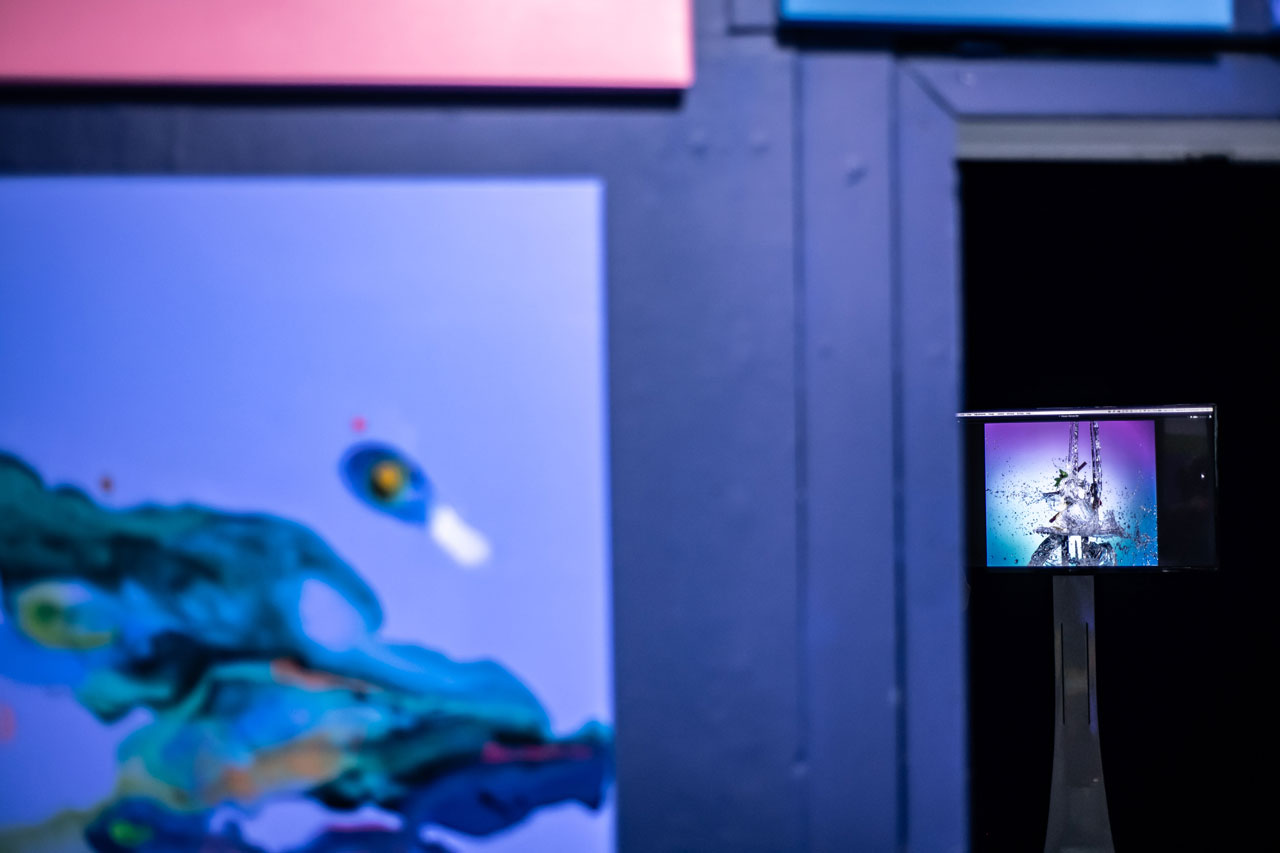
Paloma Rincón for CANVAS by Bombay Sapphire, London, July 2018. Installattion view by Elias Joidos © Yatzerland Ltd.
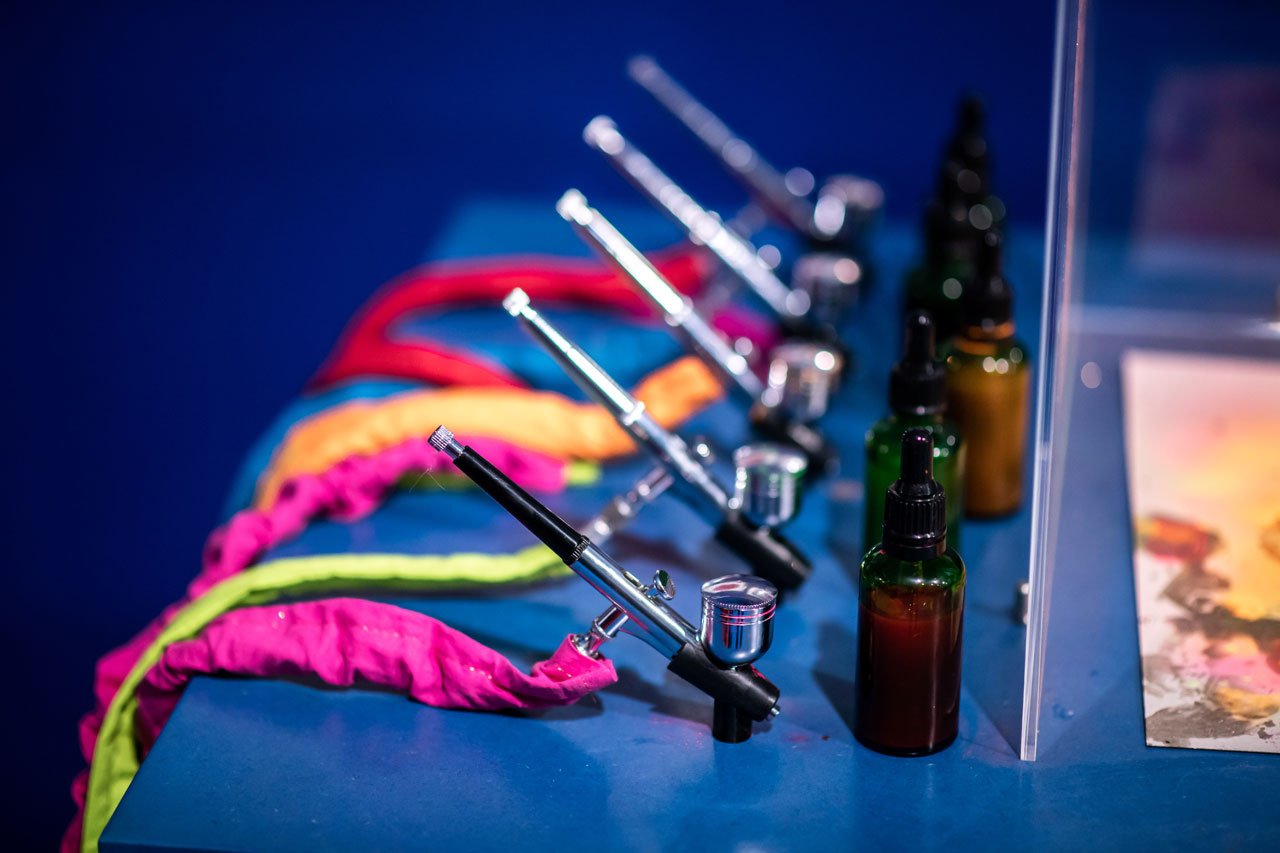
CANVAS event by Bombay Sapphire, London, July 2018. Installattion view by Elias Joidos © Yatzerland Ltd.

The evolution of Bombay Sapphire bottles at the Museum of the gin's distillery at Laverstoke Mill. Installattion view by Elias Joidos © Yatzerland Ltd.
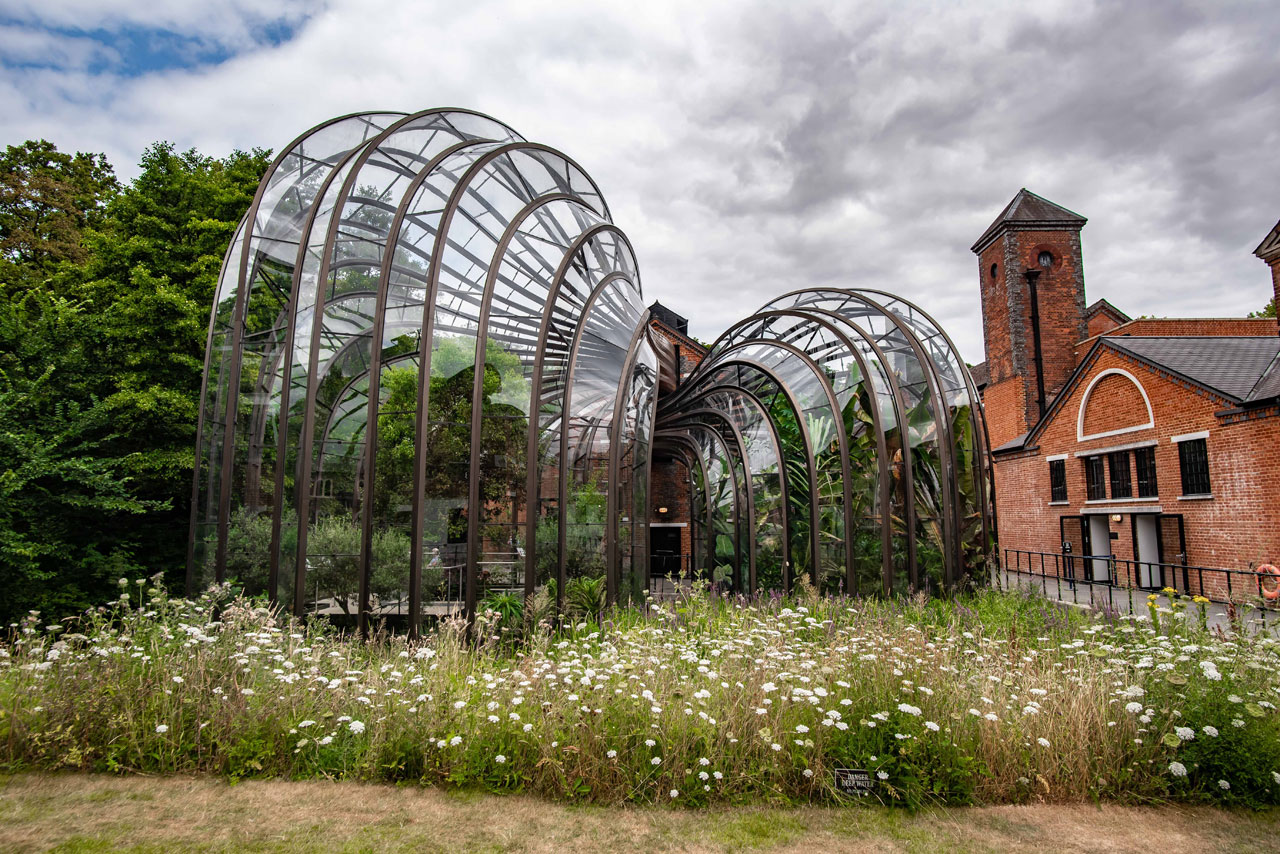
Bombay Sapphire’s distillery at Laverstoke Mill. Photo by Elias Joidos © Yatzerland Ltd.
After a lively night of G&Ts infused with artistic flavour, we headed to Bombay Sapphire’s distillery at Laverstoke Mill, about 100 kilometers from London, where another kind of infusion is taking place. Originally developed as a paper mill for the British Empire’s banknotes in the 1700s, the historic building complex was thoroughly renovated by London-based architects Heatherwick Studio in 2010 and now houses a state-of-the-art facility where every drop of Bombay Sapphire is distilled through its unique “vapour infusion” process that gives it its distinctly crisp, floral taste.
Laverstoke Mill consists of many listed red-brick buildings, including the magnificent India House, an edifice of Victorian architecture built in 1916 for making rupees for the Bank of India—which was taken as an auspicious sign when the site was chosen 18 years ago for Bombay Sapphire whose name was inspired by the violet-blue, 182-carat “Star of Bombay” gem discovered in Sri Lanka. India House now houses large distillation stills producing more than 100 thousand bottles of gin every day, as our friendly guide Ashley.A.Haines explained.
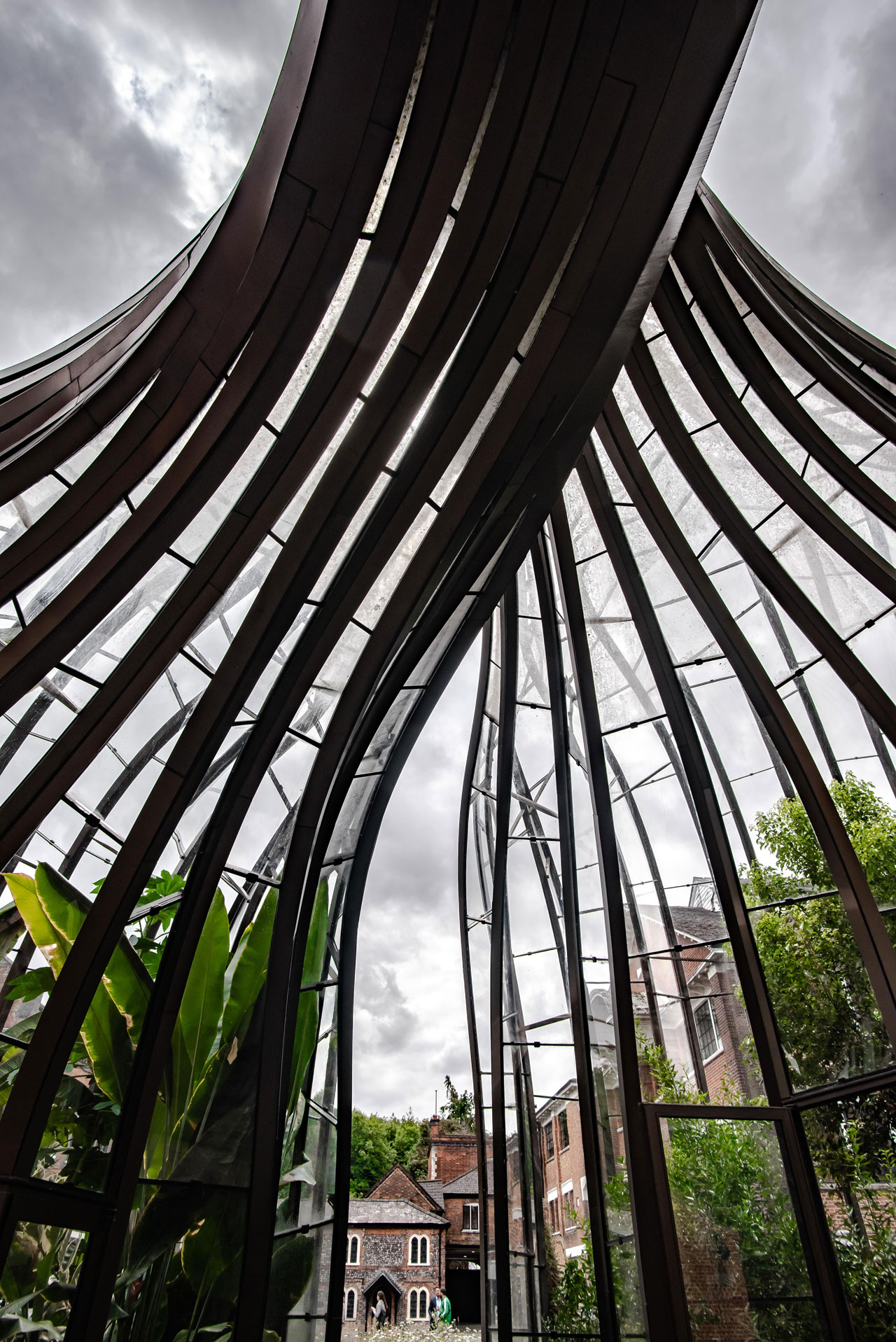
Bombay Sapphire’s distillery at Laverstoke Mill. Photo by Elias Joidos © Yatzerland Ltd.
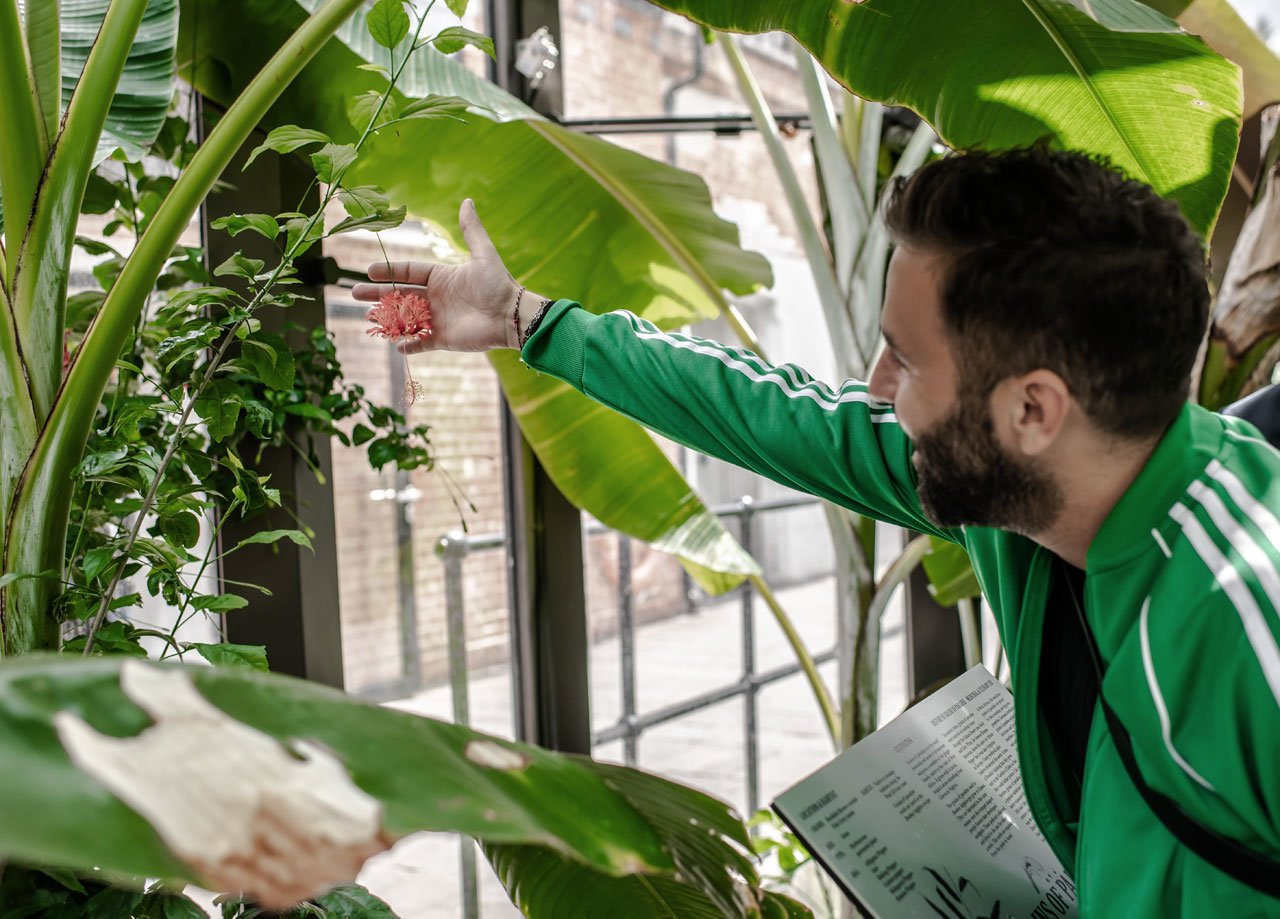
Bombay Sapphire’s distillery at Laverstoke Mill. Photo by Elias Joidos © Yatzerland Ltd.
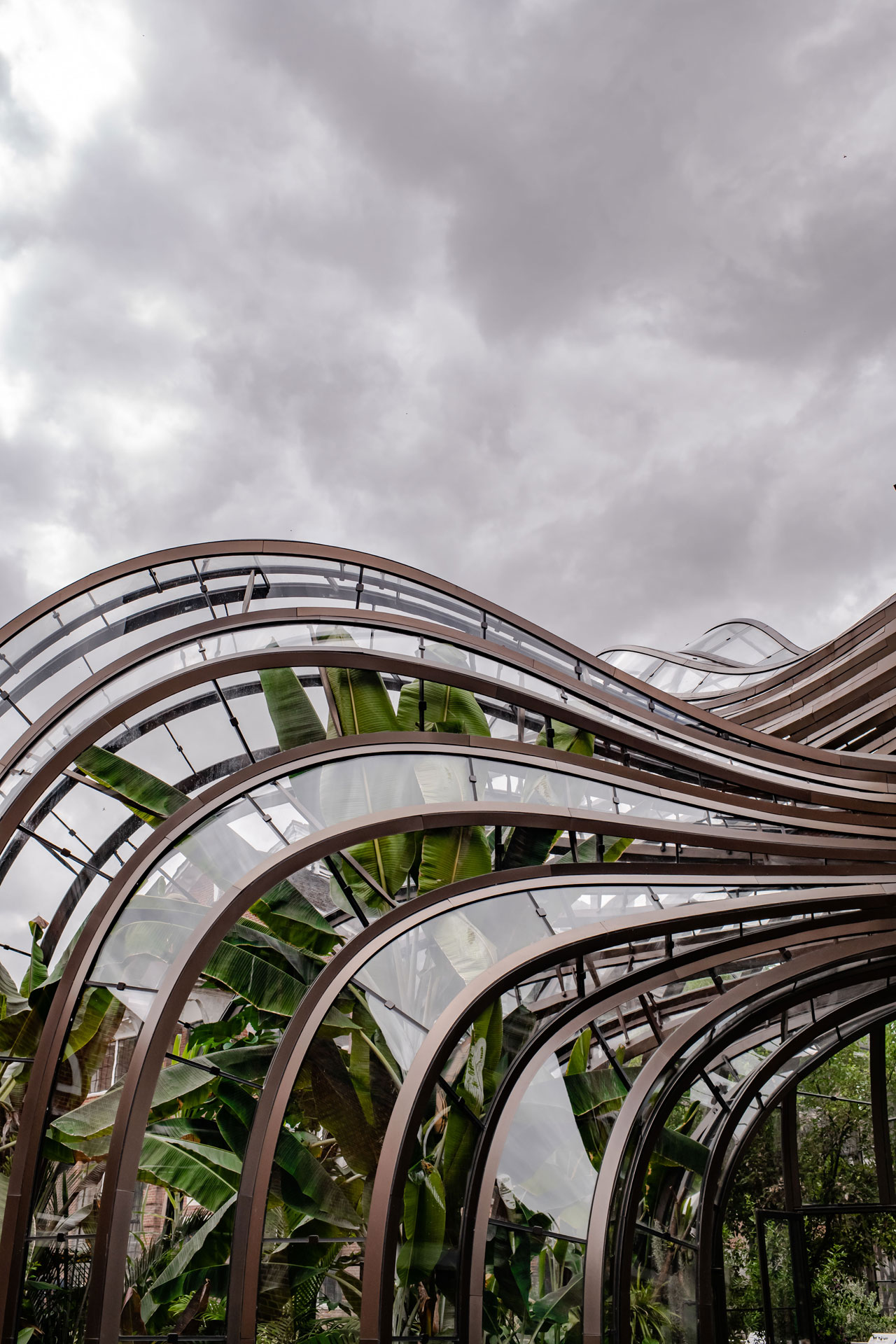
Bombay Sapphire’s distillery at Laverstoke Mill. Photo by Elias Joidos © Yatzerland Ltd.
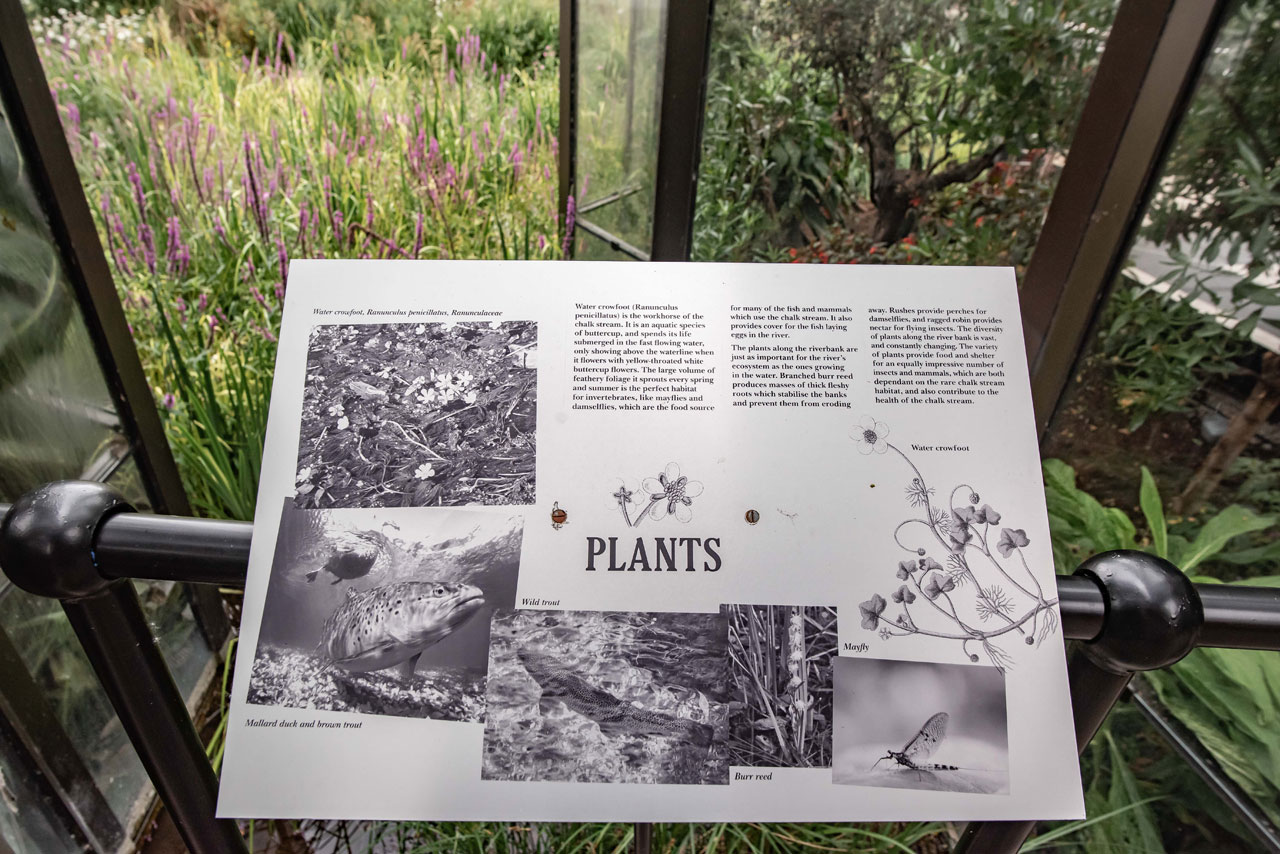
Bombay Sapphire’s distillery at Laverstoke Mill. Photo by Elias Joidos © Yatzerland Ltd.
Opposite India House, on the other side of the River Test that flows through the site, stand two extraordinary glasshouses by Heatherwick Studio, whose design seems to channel both the Victorian and the Space Age, where the botanicals used to infuse Bombay Sapphire gin with flavor grow. Upon stepping inside, we were hit by a rhapsody of fresh aromas that both sooth and invigorate including juniper berries, coriander, angelica, almonds, cubeb berries, lemon peel, orris root, liquorice, cassia bark and grains of paradise.
Both glasshouses—the larger of which accommodates the Mediterranean plants in a dry temperate environment while the smaller glasshouse provides a humid climate for the Tropical species—are ingeniously heated by the excess warm air from the distillation process at the Dakin Still House next door, which flows in through the “umbilical” connections, making the Laverstoke Mill one of the most sustainable distilleries in the world.
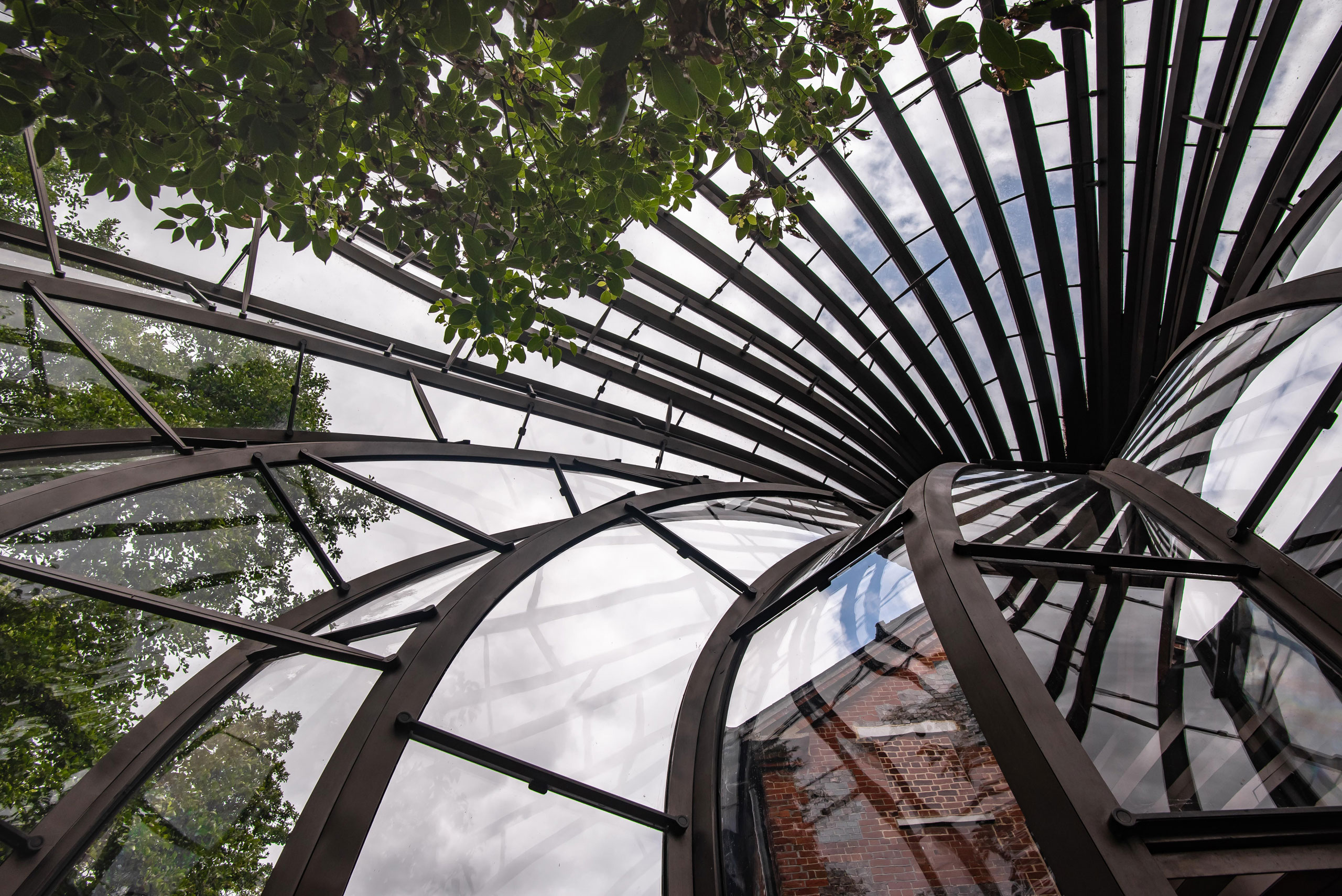
Bombay Sapphire’s distillery at Laverstoke Mill. Photo by Elias Joidos © Yatzerland Ltd.
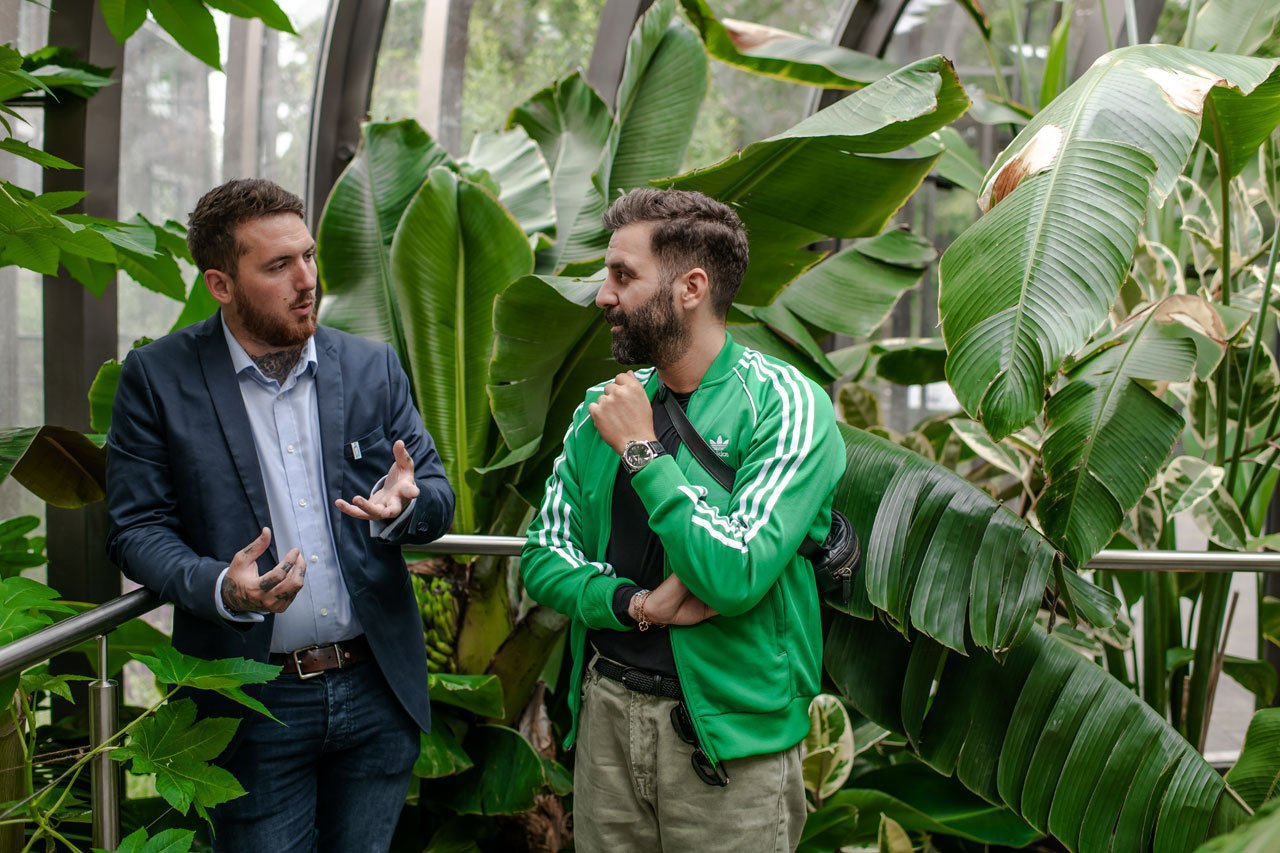
Ashley.A.Haines and Costas Voyatzis at Bombay Sapphire’s distillery at Laverstoke Mill. Photo by Elias Joidos © Yatzerland Ltd.
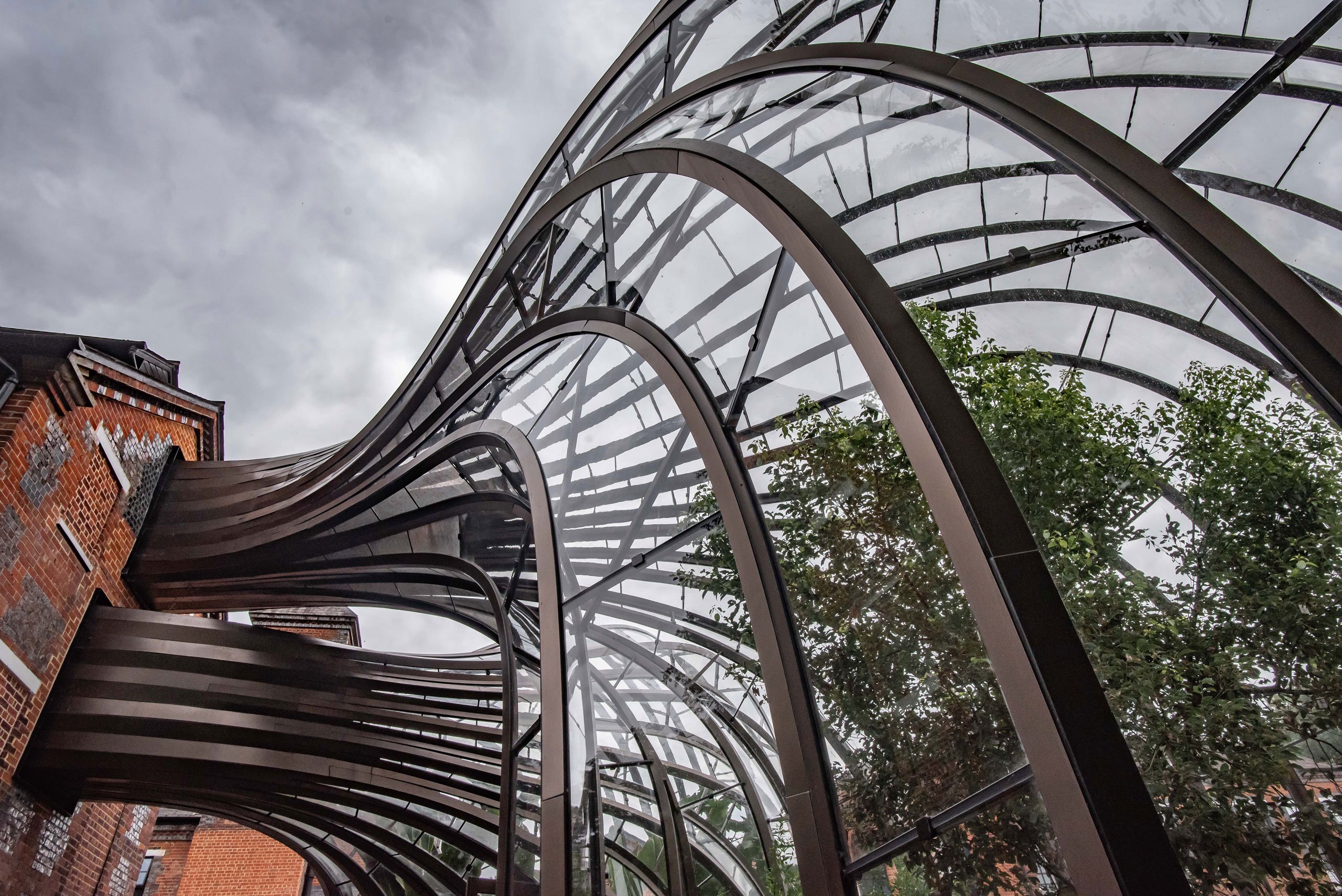
Bombay Sapphire’s distillery at Laverstoke Mill. Photo by Elias Joidos © Yatzerland Ltd.
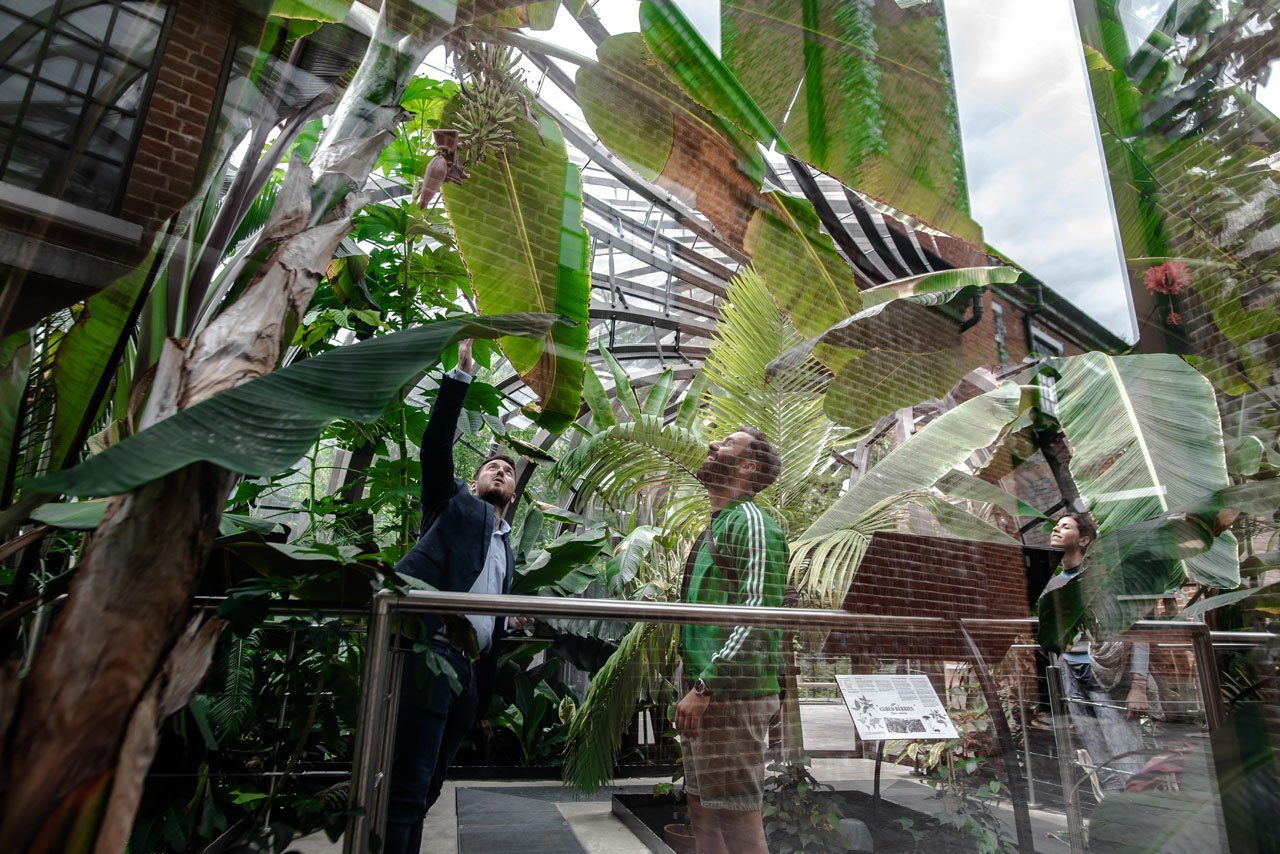
Bombay Sapphire’s distillery at Laverstoke Mill. Photo by Elias Joidos © Yatzerland Ltd.

Bombay Sapphire’s distillery at Laverstoke Mill. Photo by Elias Joidos © Yatzerland Ltd.
At the heart of the Dakin Still House next door, two large vapour infusion stills inside a sealed glass enclosure, where no photos or electronics are allowed due to the high alcohol concentration in the air, allow visitors to see the distillation process firsthand (the two impressive pieces of retro-futuristic machinery look to us like they came right out of a Jules Verne novel).
Overlooking the stills in the same building, is the Botanical Dry Room, an airy, daylight-filled space where visitors are urged to smell the 22 scented jars on display in order to choose their favorite aromas. The selection, which is noted on a special aroma map, serves as the basis for the tailor-made gin cocktail that guests enjoy later on at the Mill Bar at the end of their visit. For us, it was the Basil Blush, a racy combination of blueberries, basil and pink peppercorns, Bombay Sapphire and fever-tree Mediterranean tonic; a perfectly refreshing ending to a truly intoxicating visit.
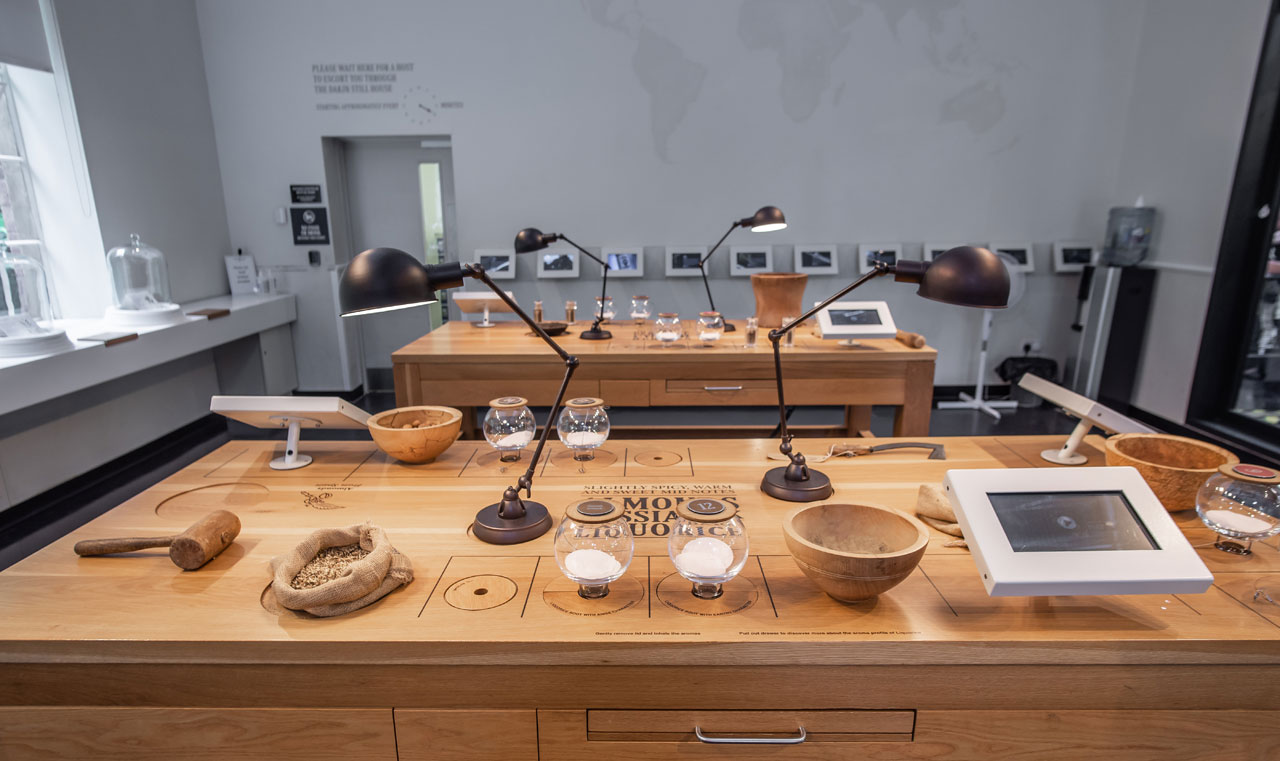
Bombay Sapphire’s distillery at Laverstoke Mill. Photo by Elias Joidos © Yatzerland Ltd.
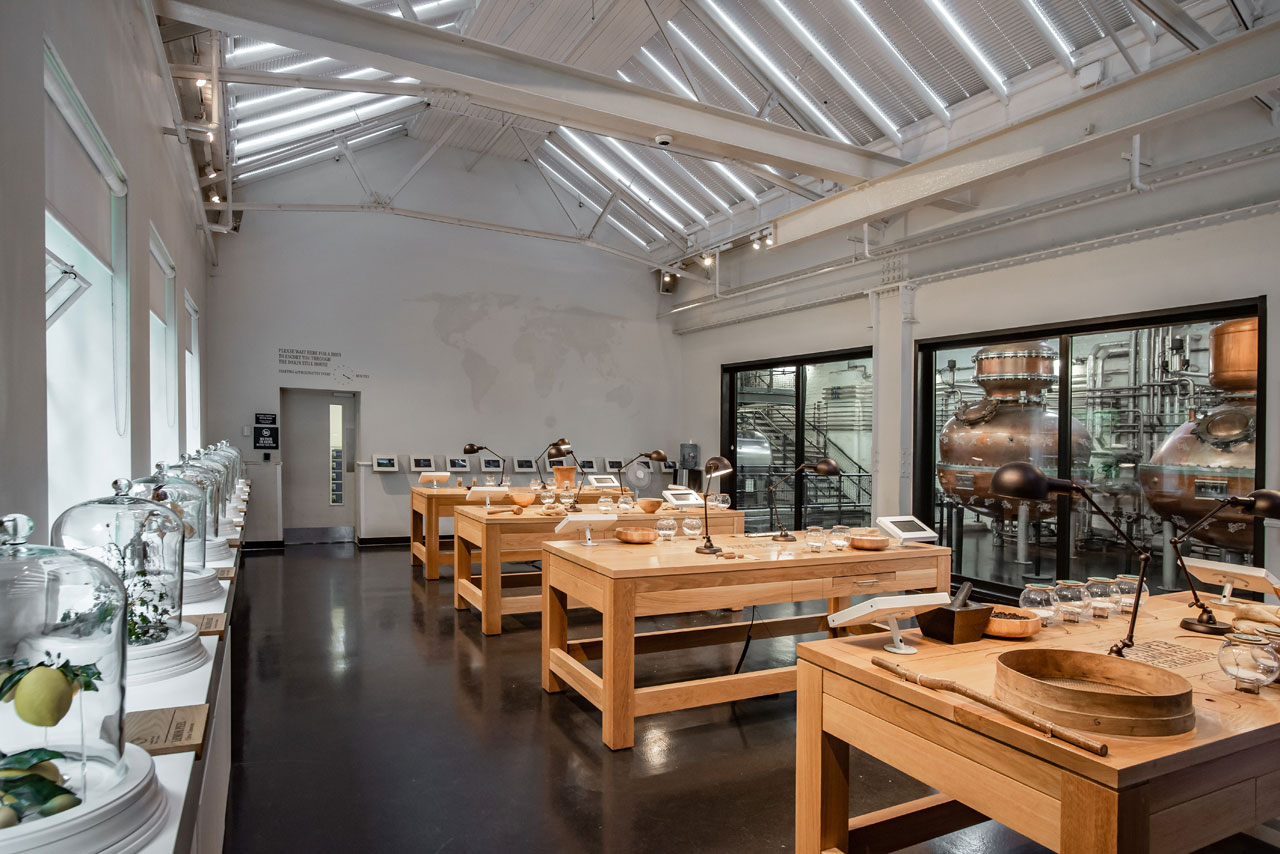
Bombay Sapphire’s distillery at Laverstoke Mill. Photo by Elias Joidos © Yatzerland Ltd.
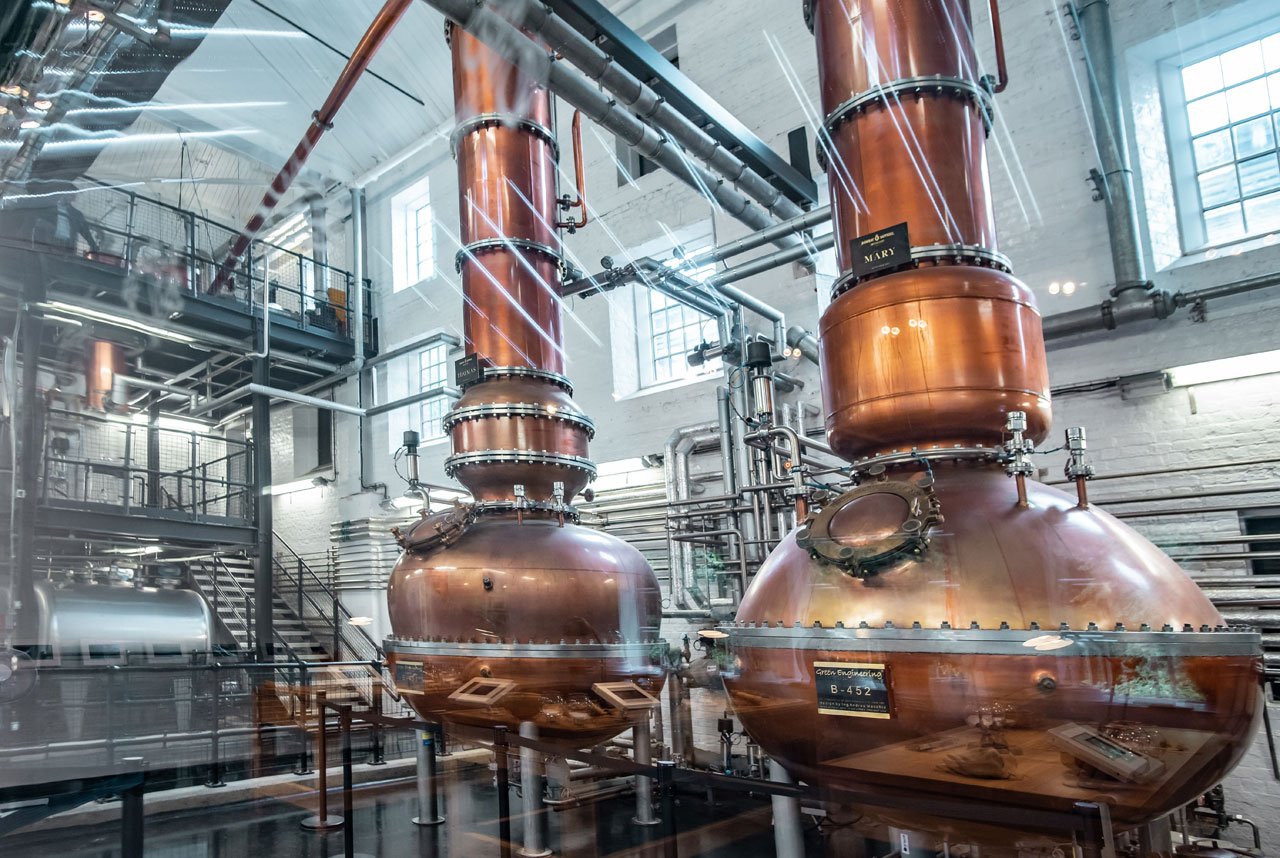
Bombay Sapphire’s distillery at Laverstoke Mill. Photo by Elias Joidos © Yatzerland Ltd.
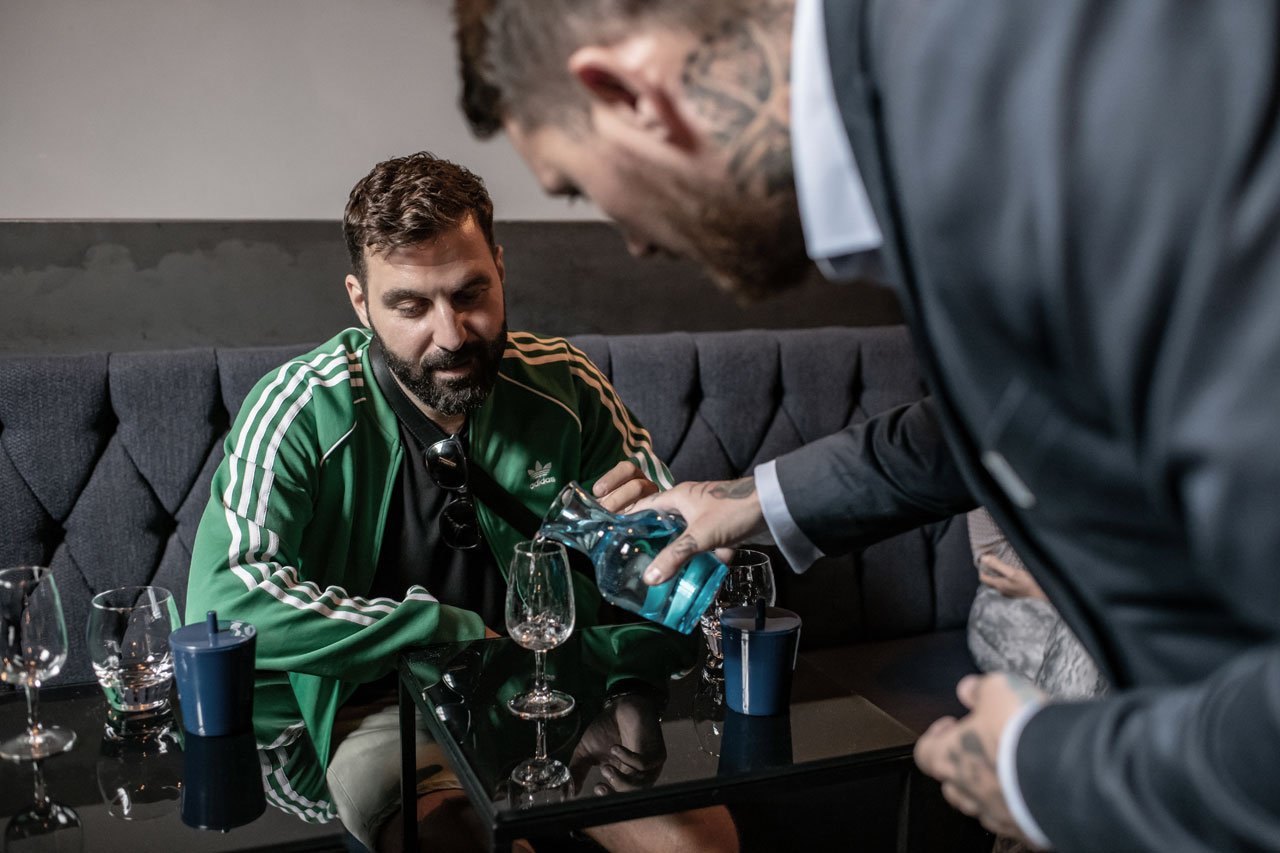
Ashley.A.Haines and Costas Voyatzis at Bombay Sapphire’s distillery at Laverstoke Mill. Photo by Elias Joidos © Yatzerland Ltd.

Bombay Sapphire’s distillery at Laverstoke Mill. Photo by Elias Joidos © Yatzerland Ltd.

Bombay Sapphire’s distillery at Laverstoke Mill. Photo by Elias Joidos © Yatzerland Ltd.
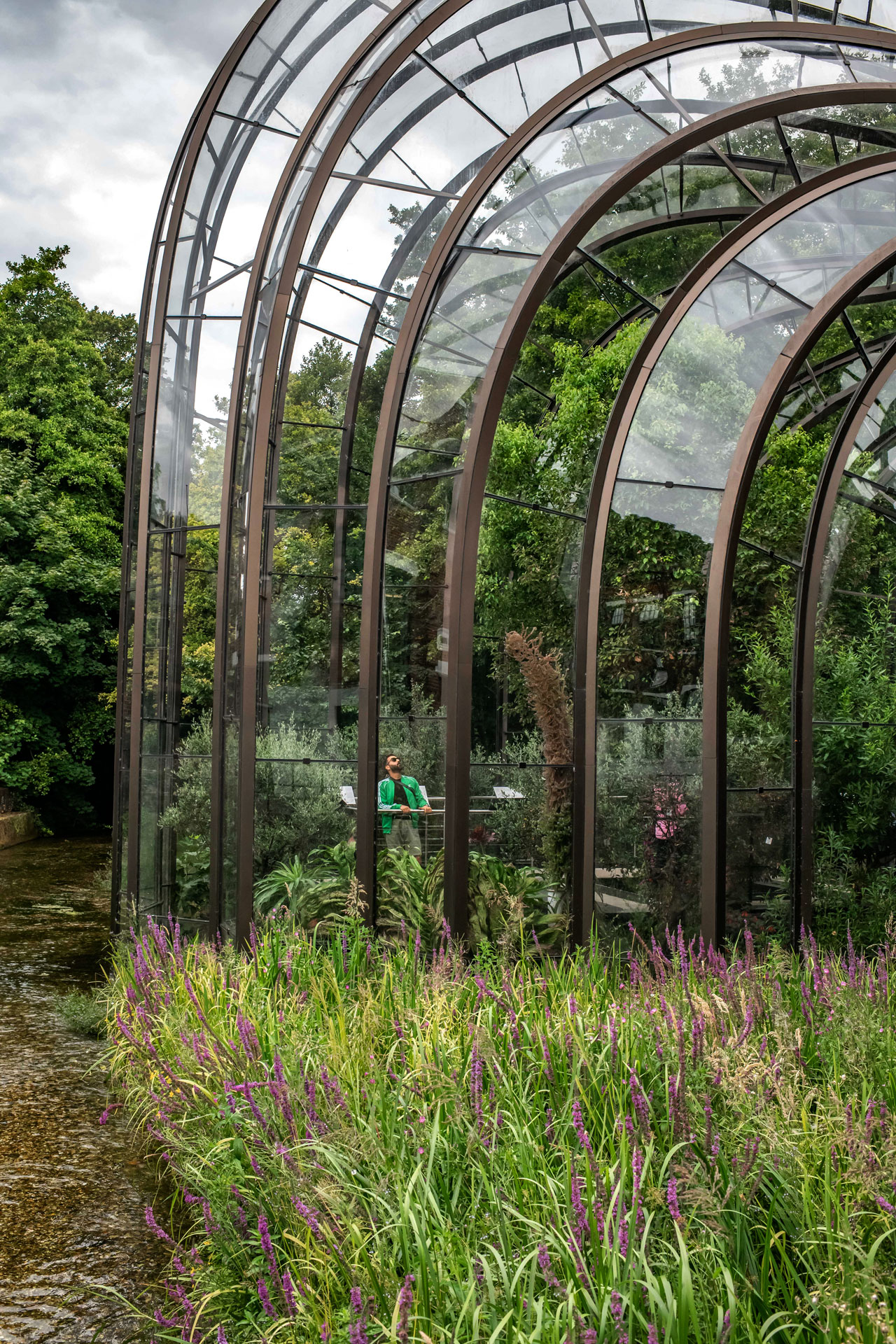
Bombay Sapphire’s distillery at Laverstoke Mill. Photo by Elias Joidos © Yatzerland Ltd.

Bombay Sapphire’s distillery at Laverstoke Mill. Photo by Elias Joidos © Yatzerland Ltd.
















